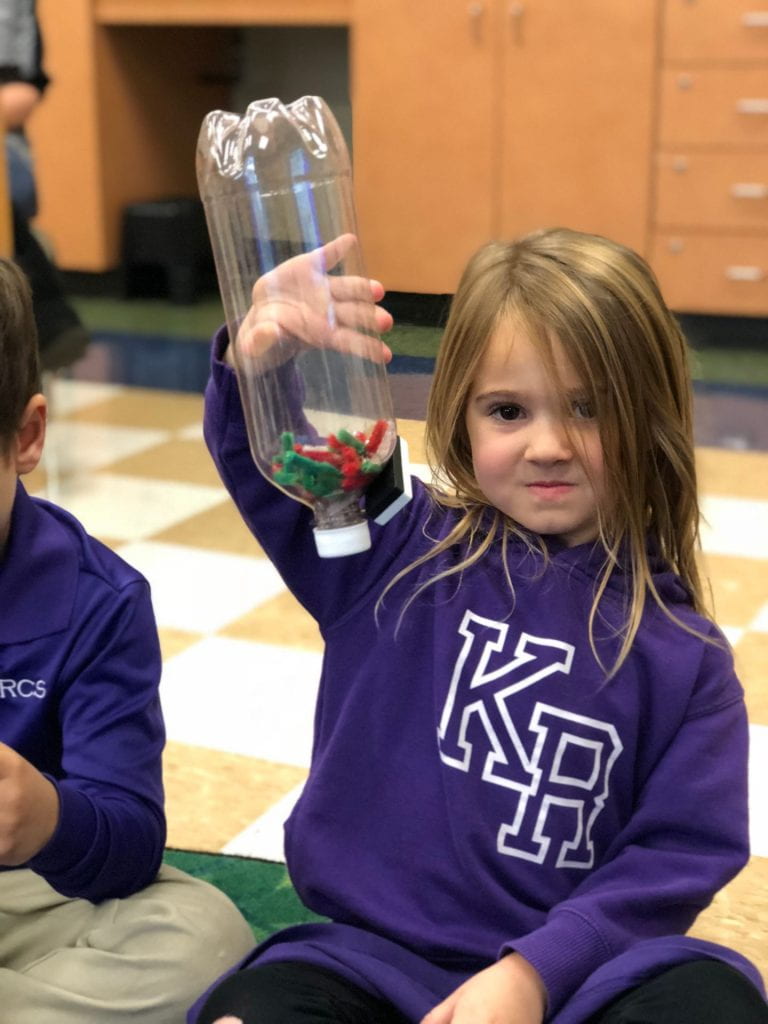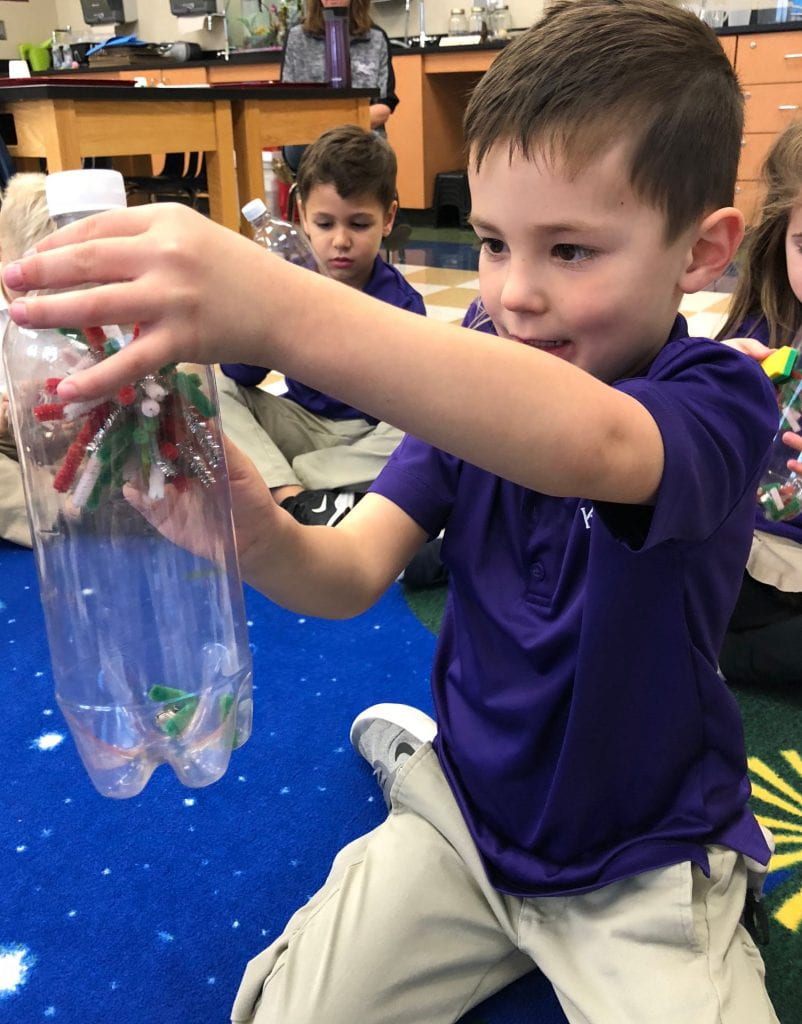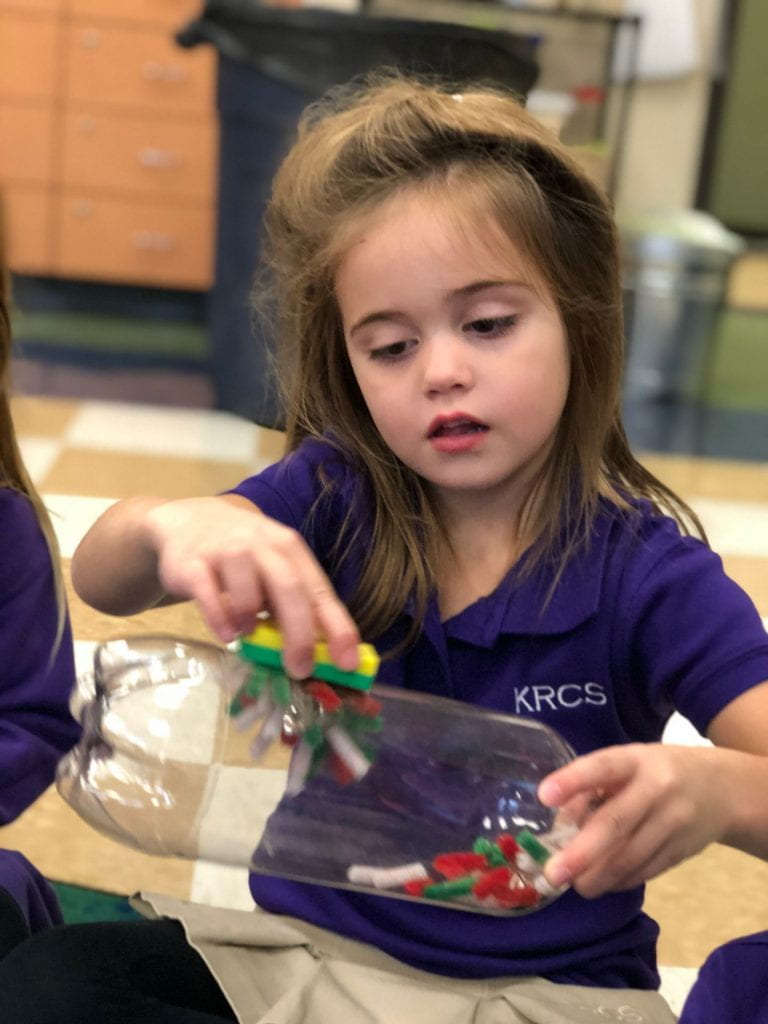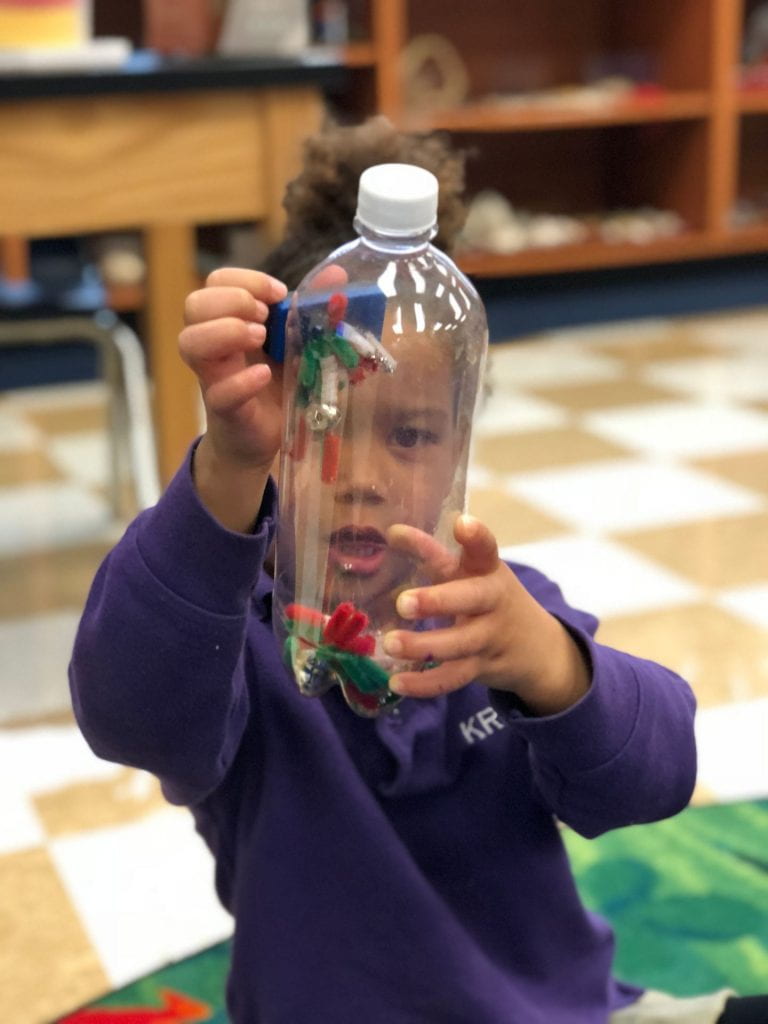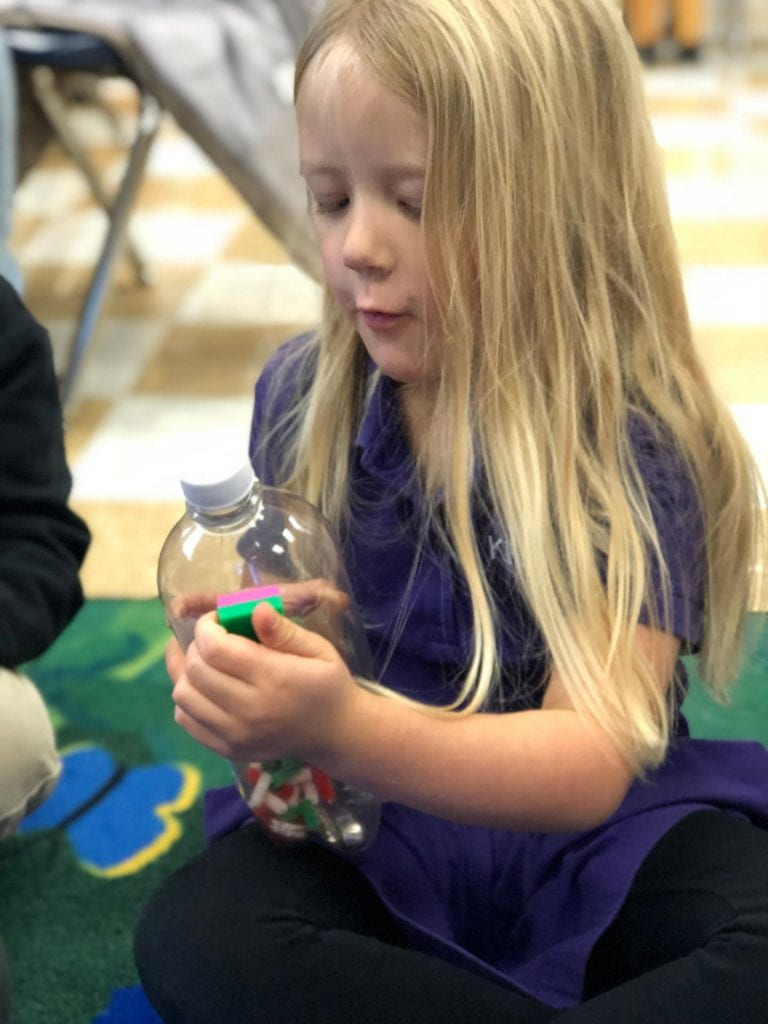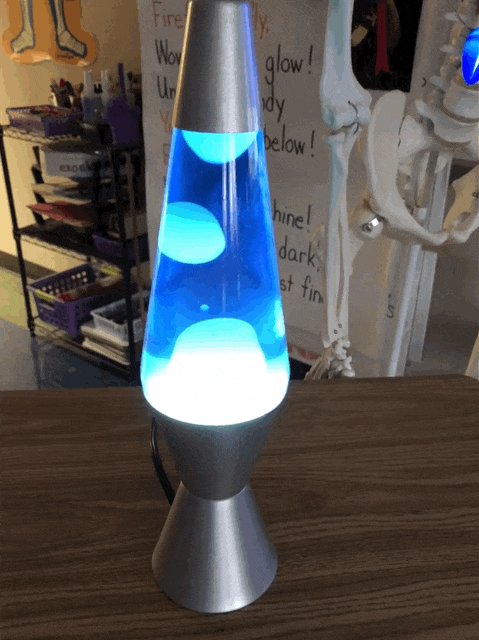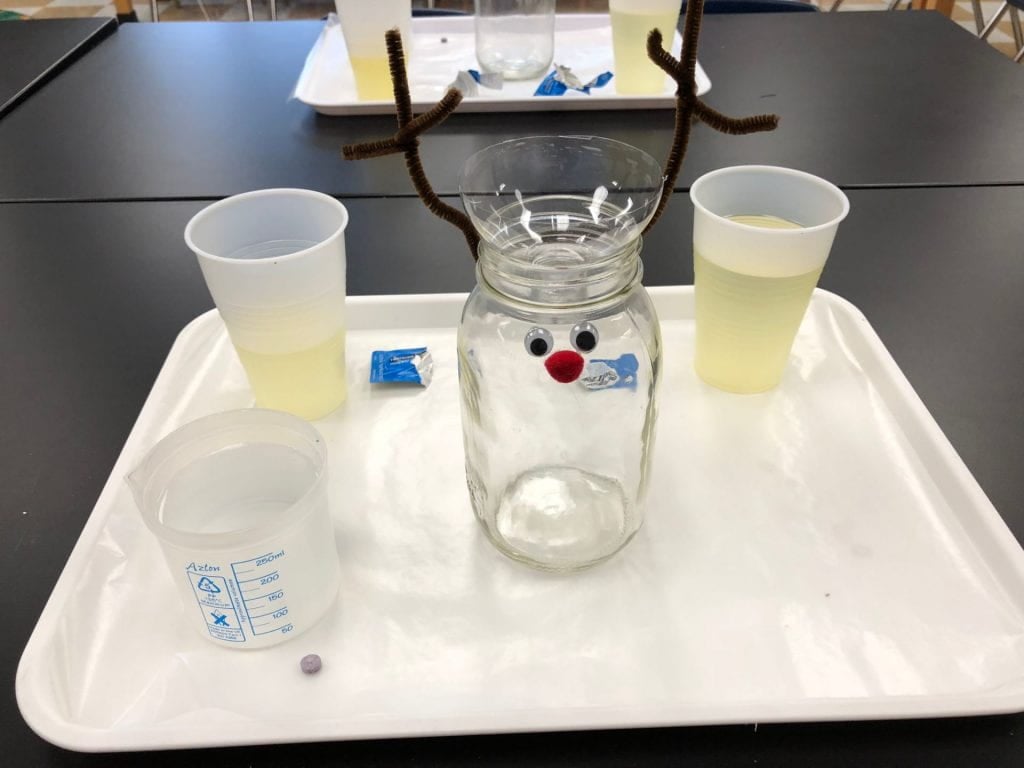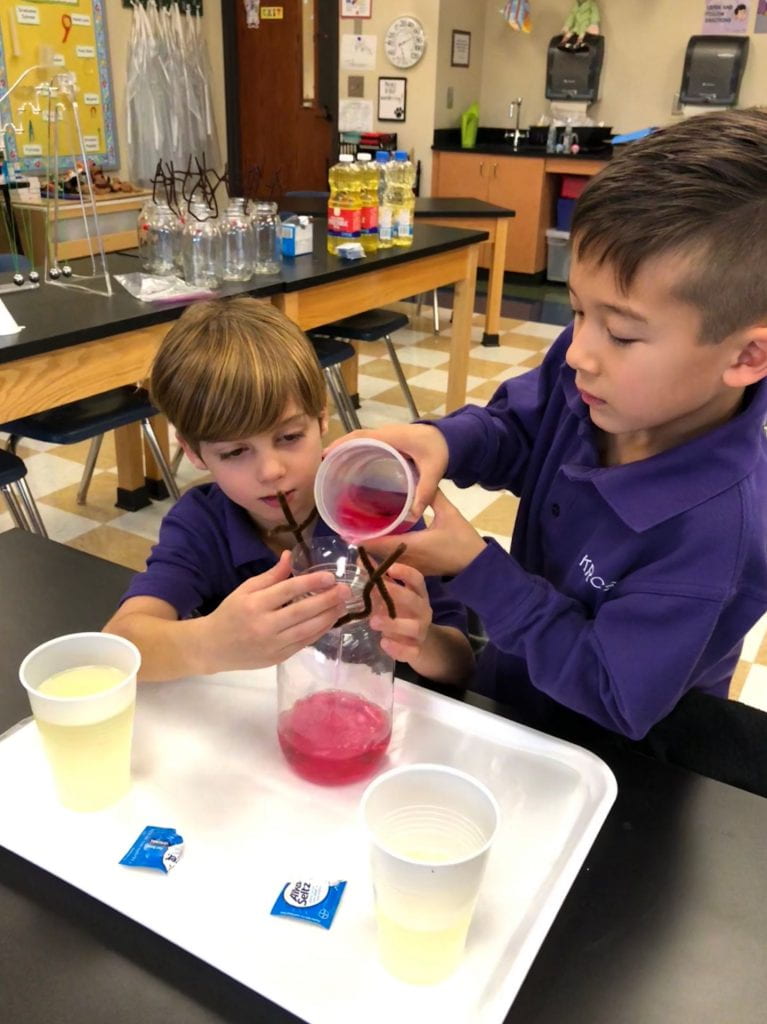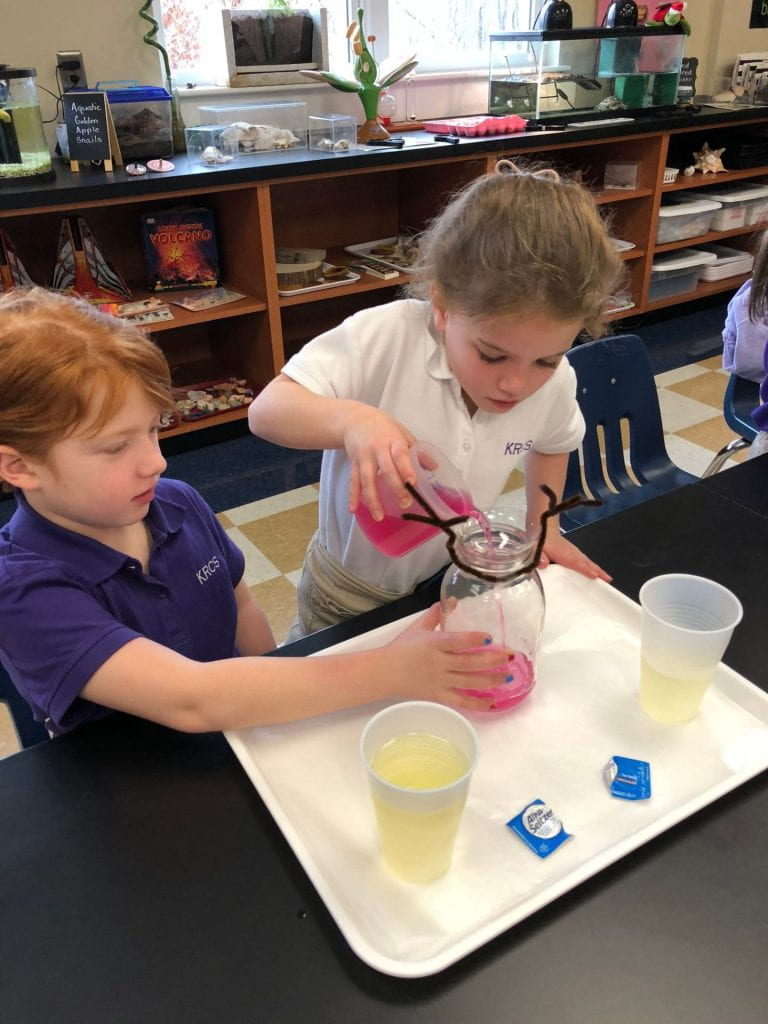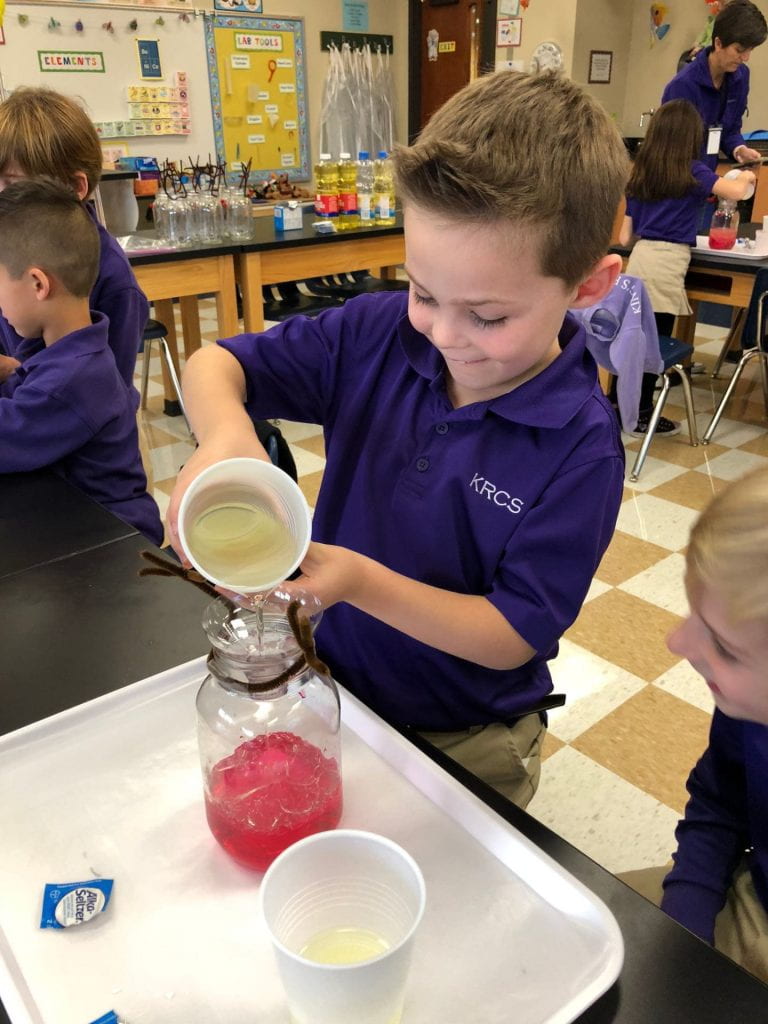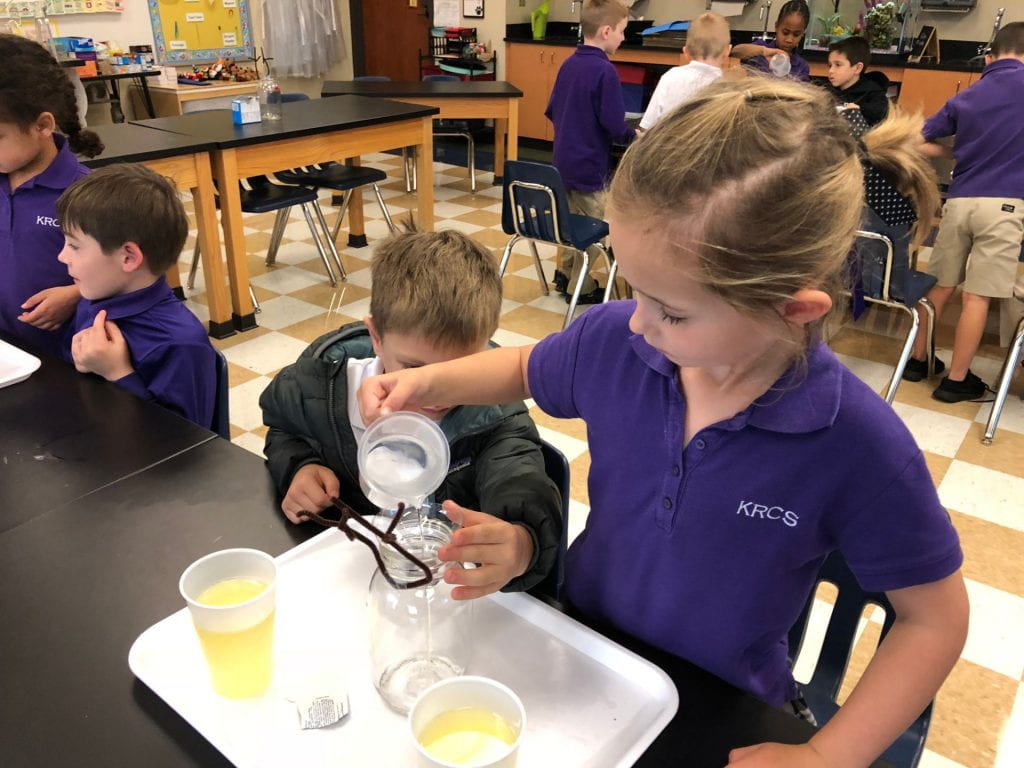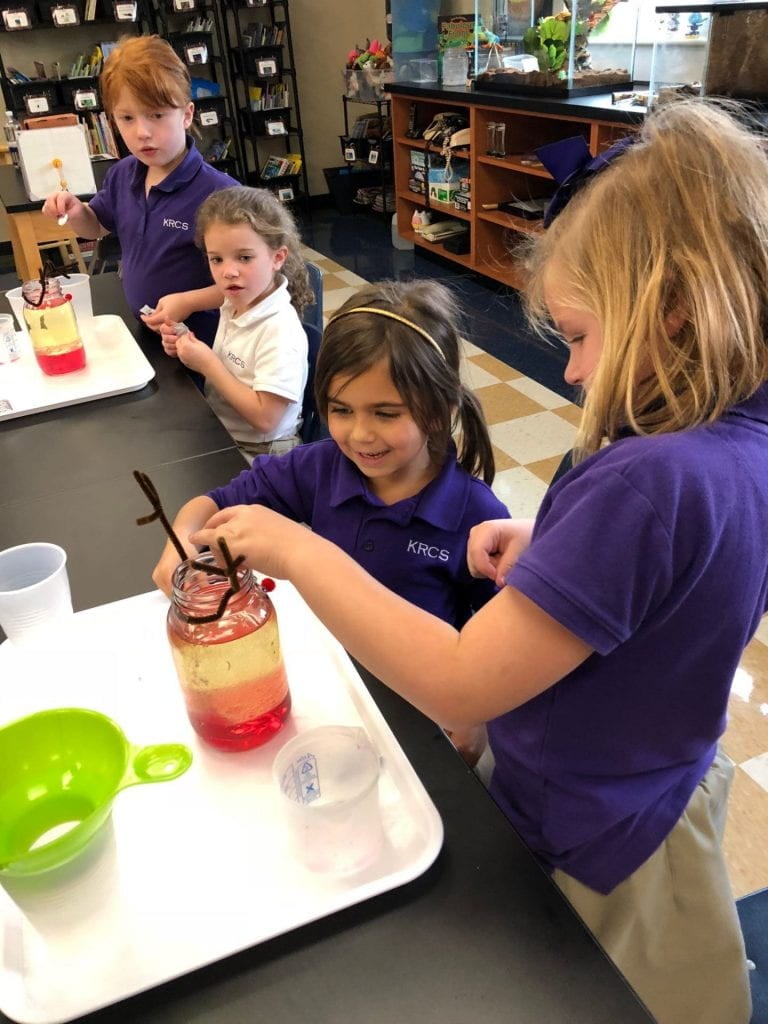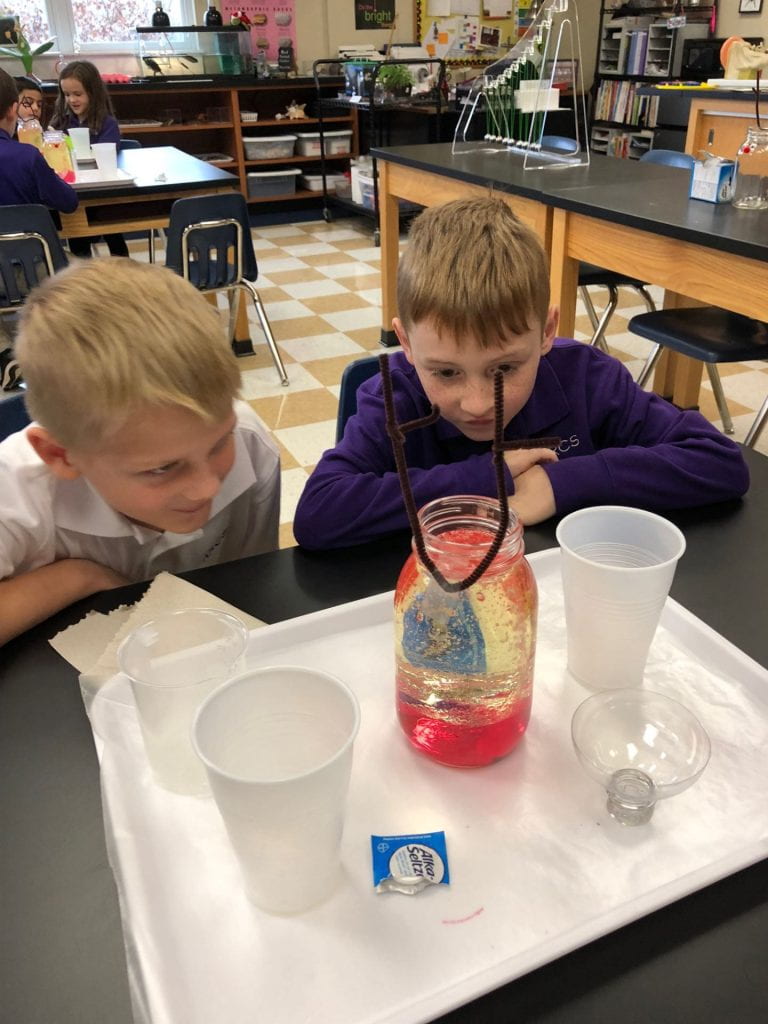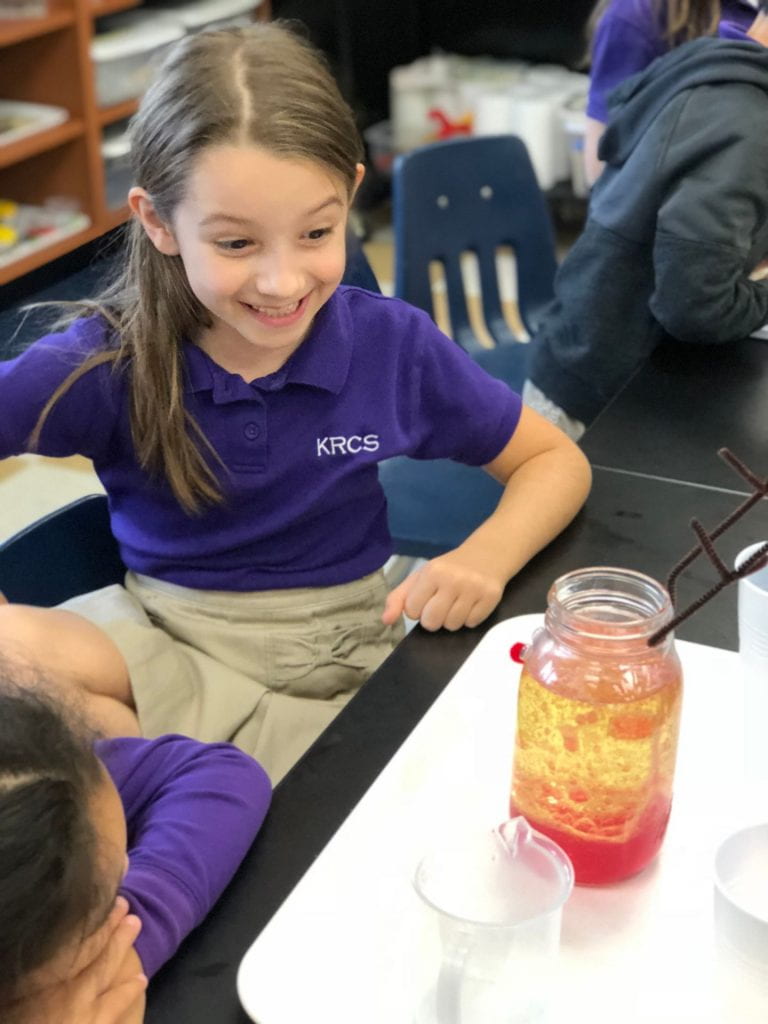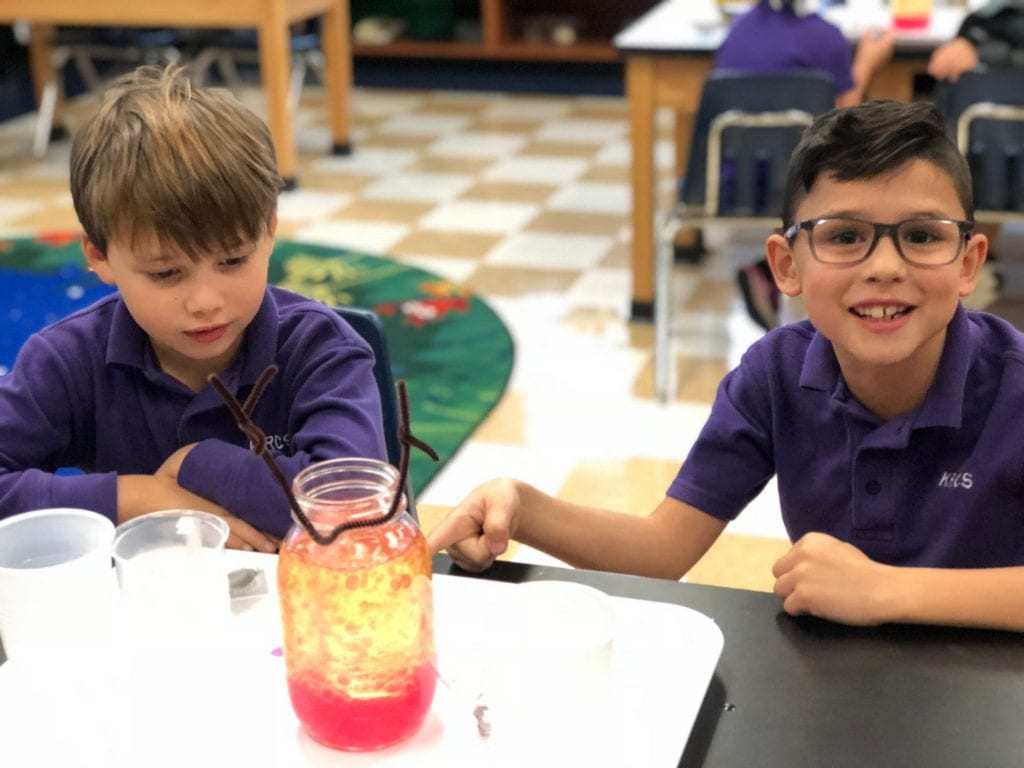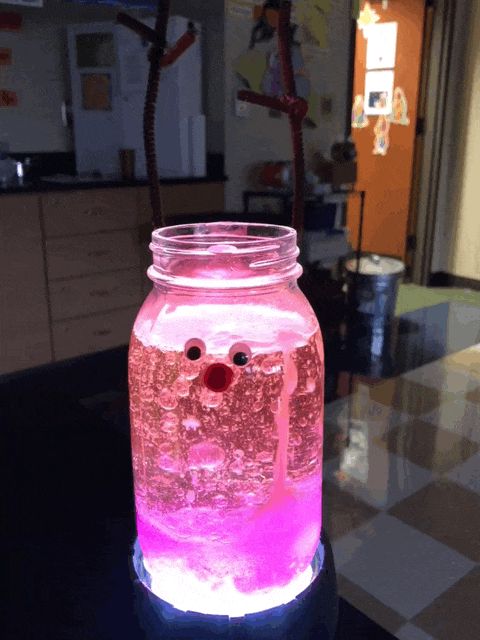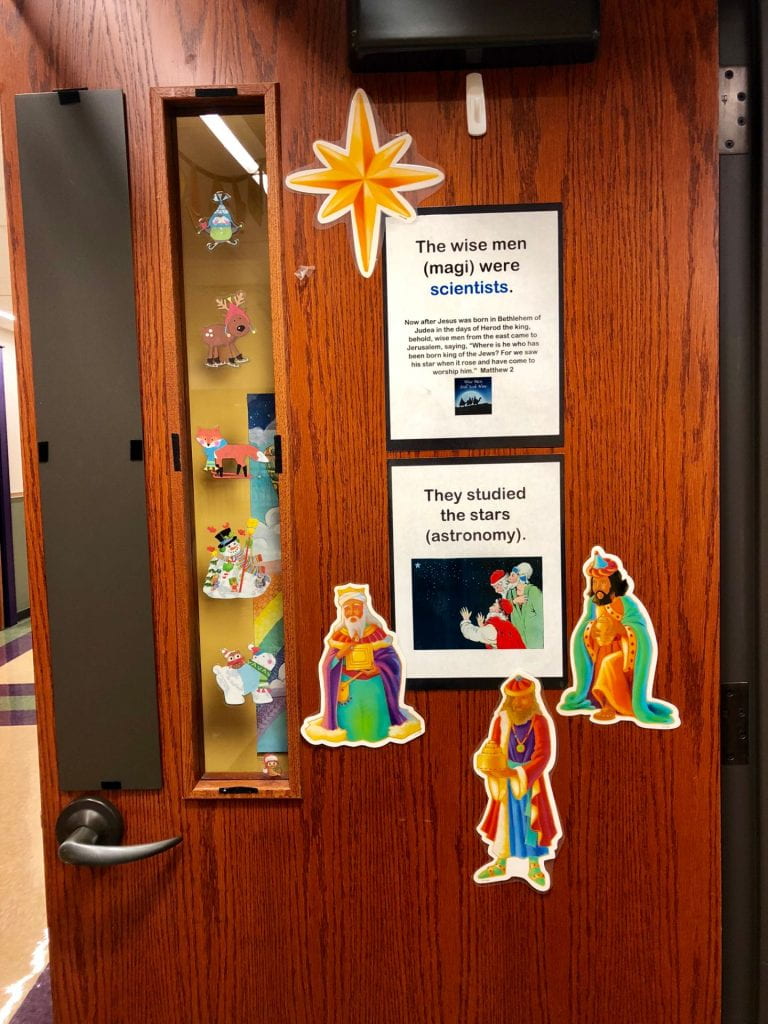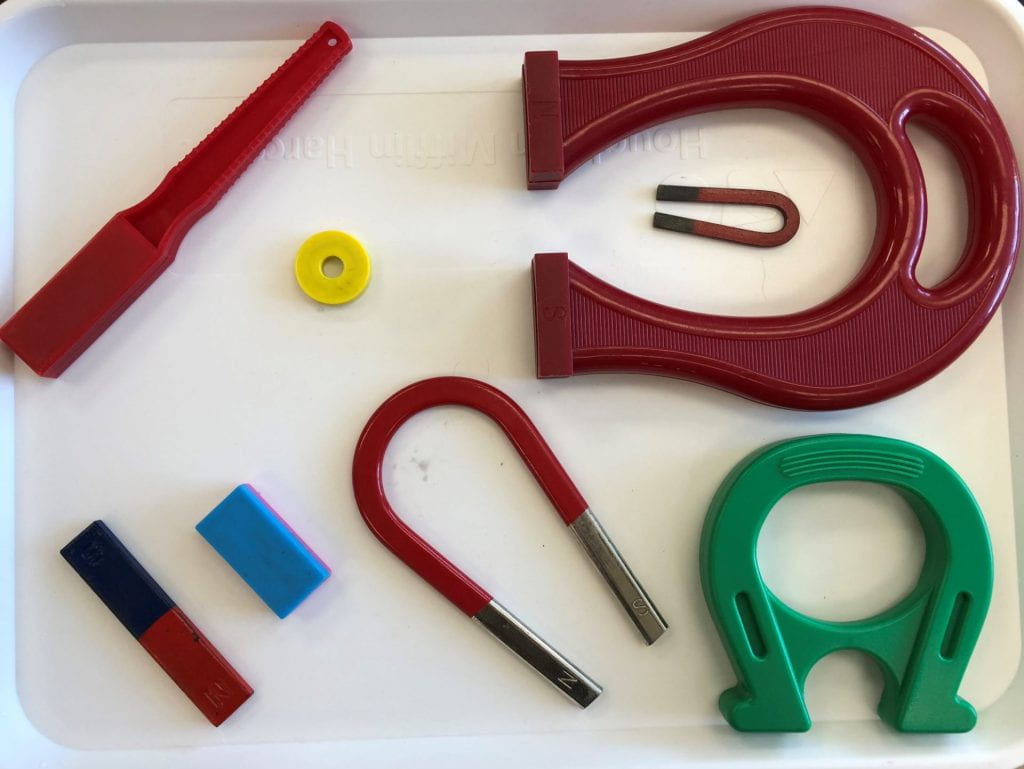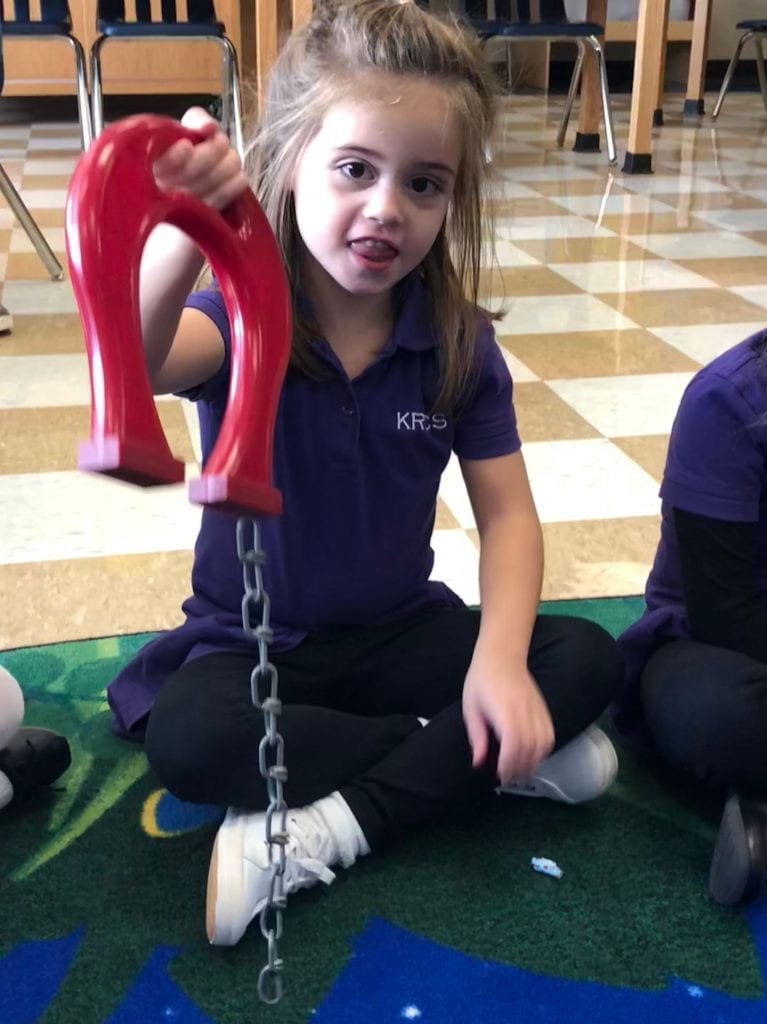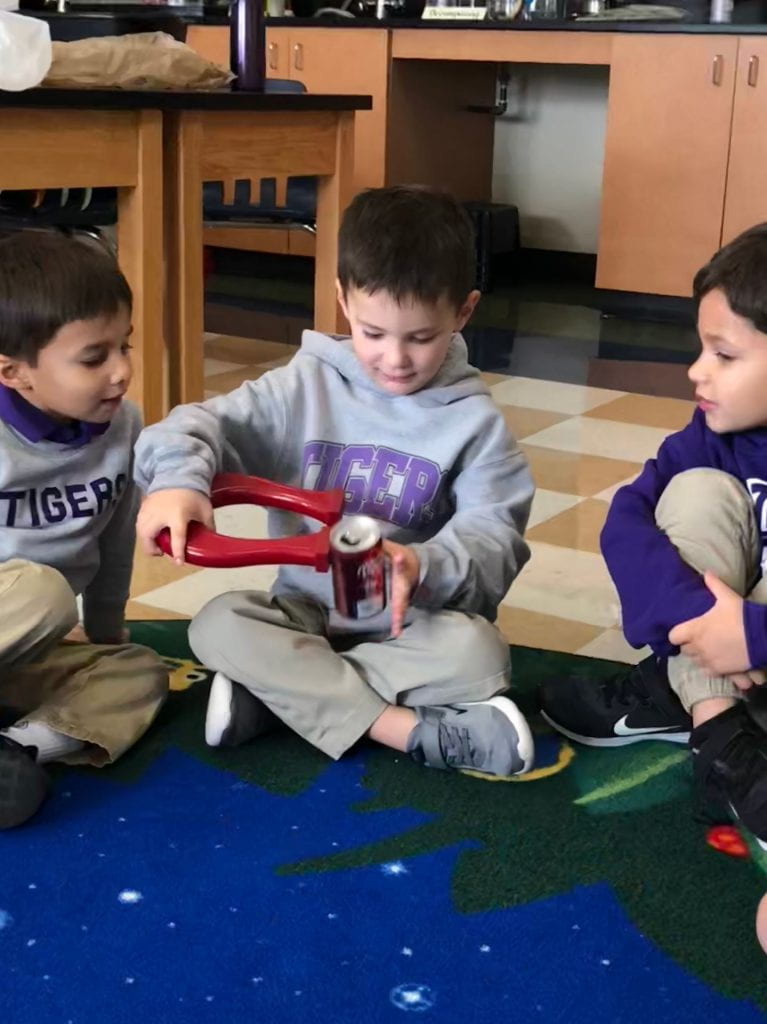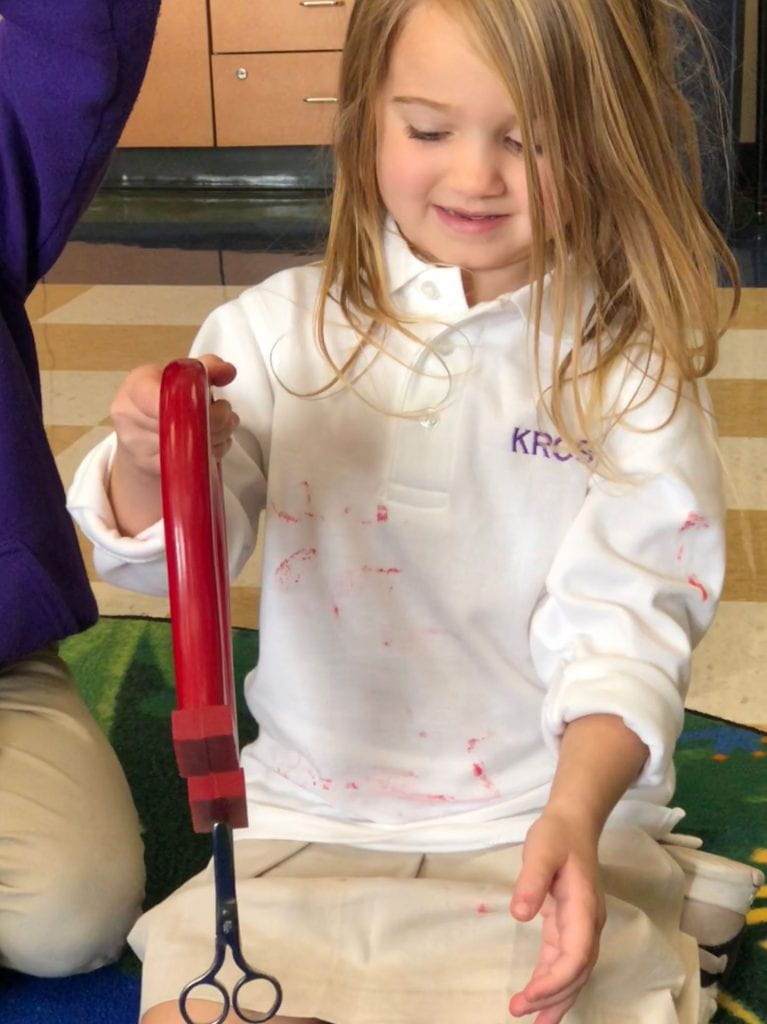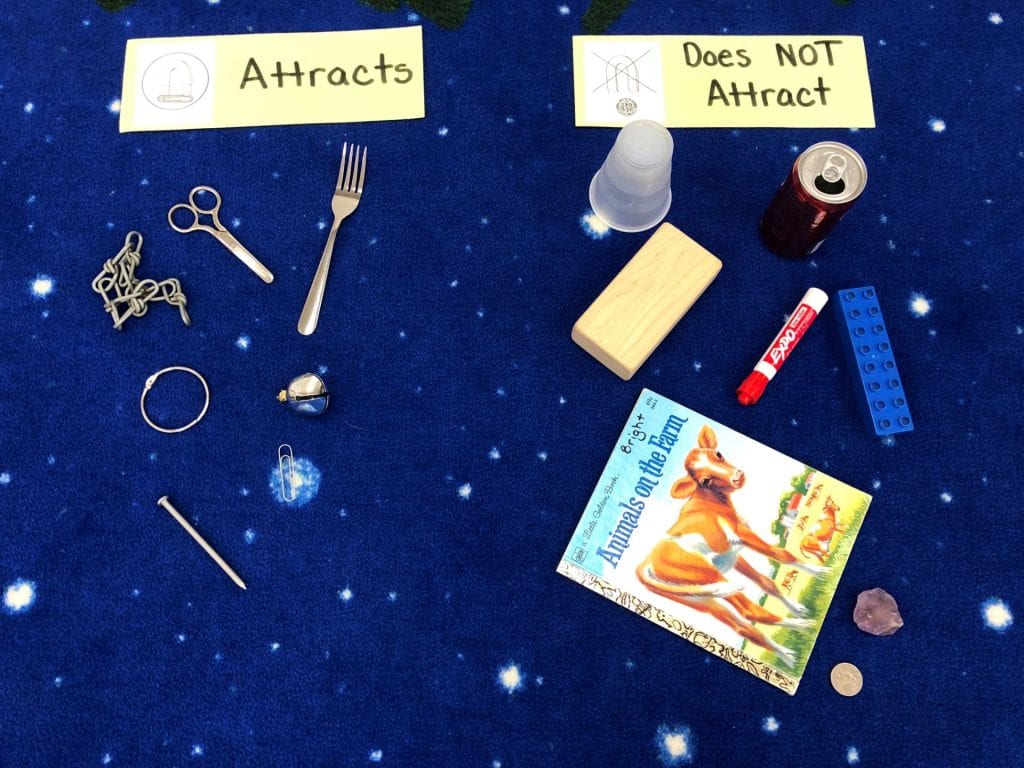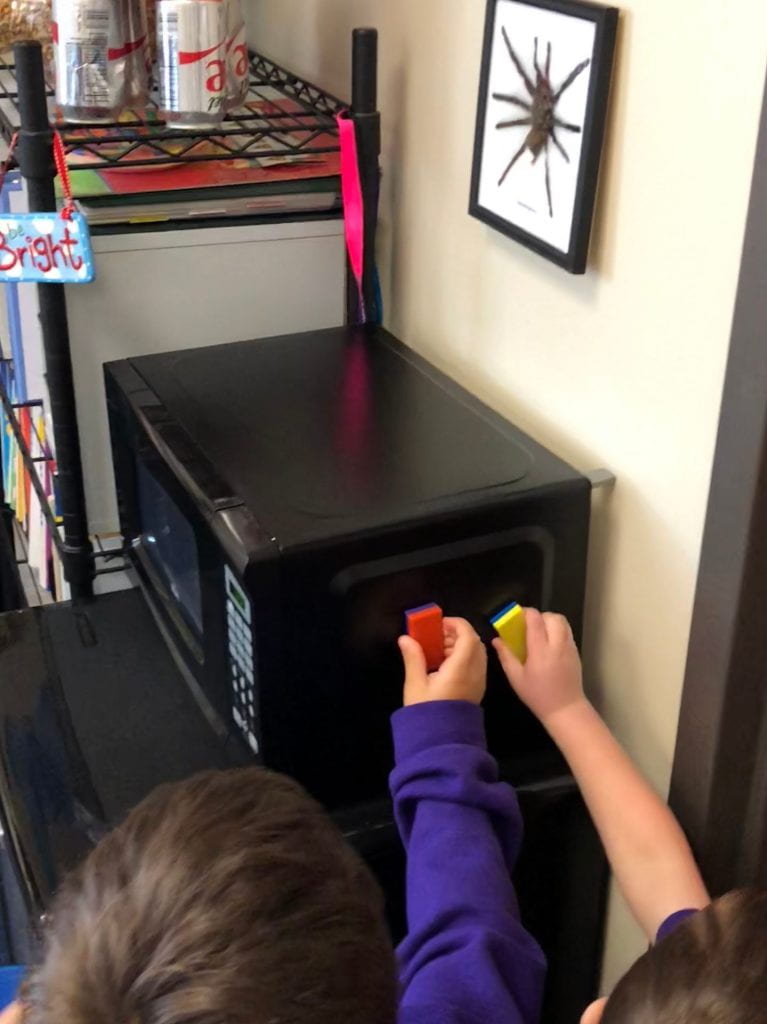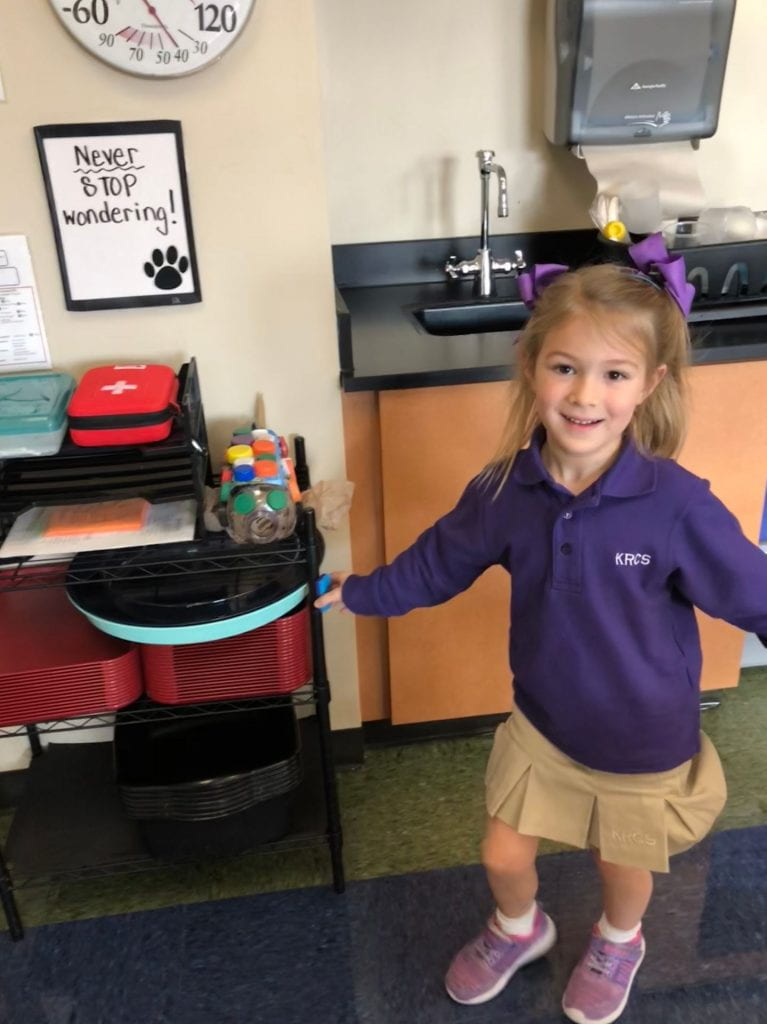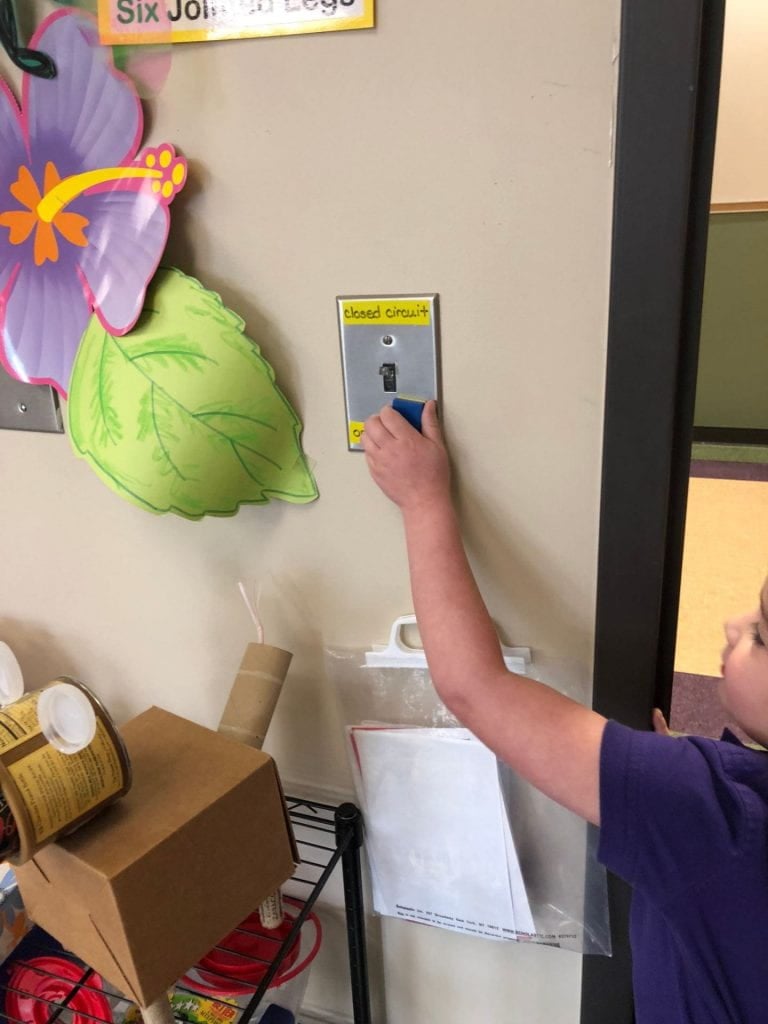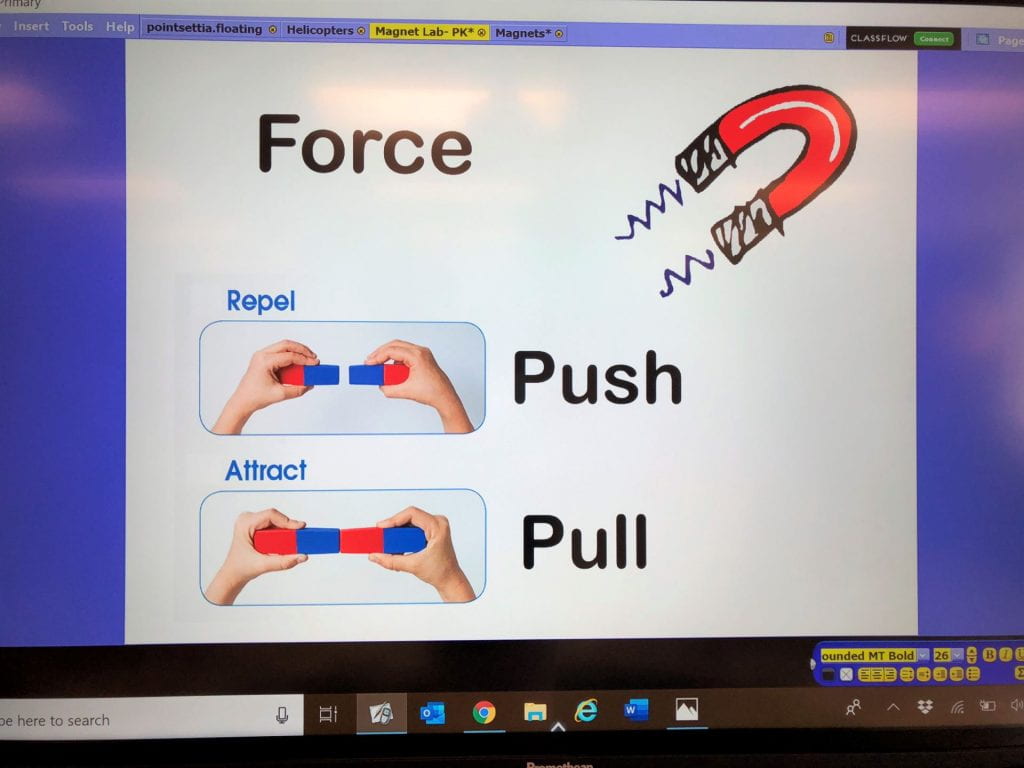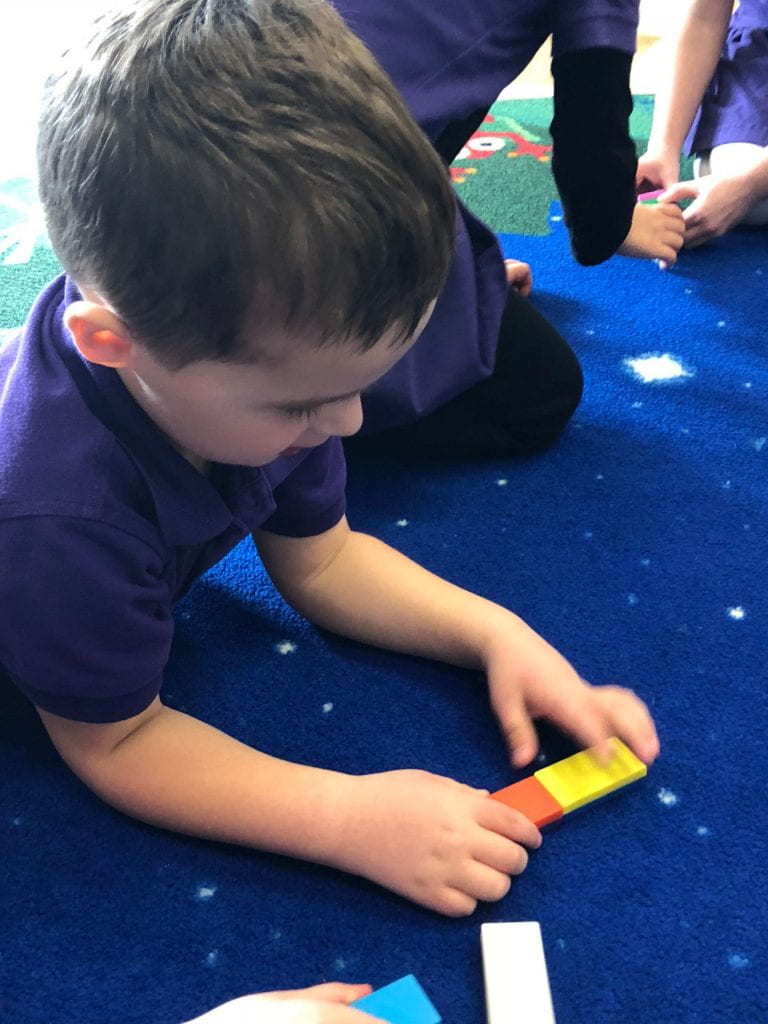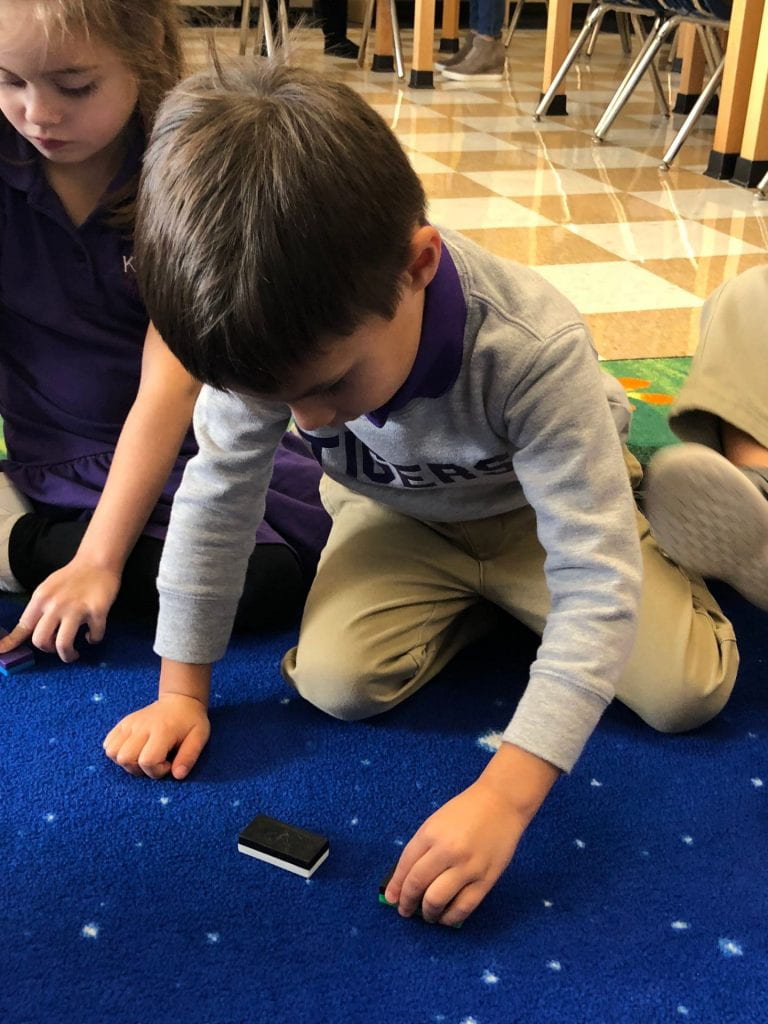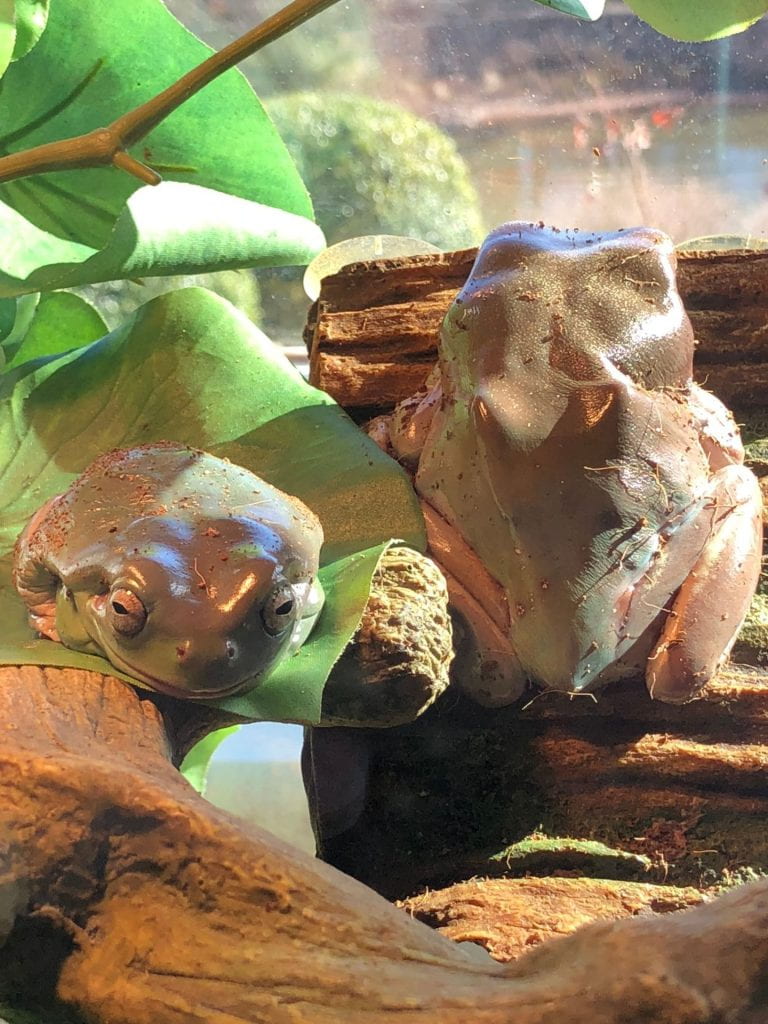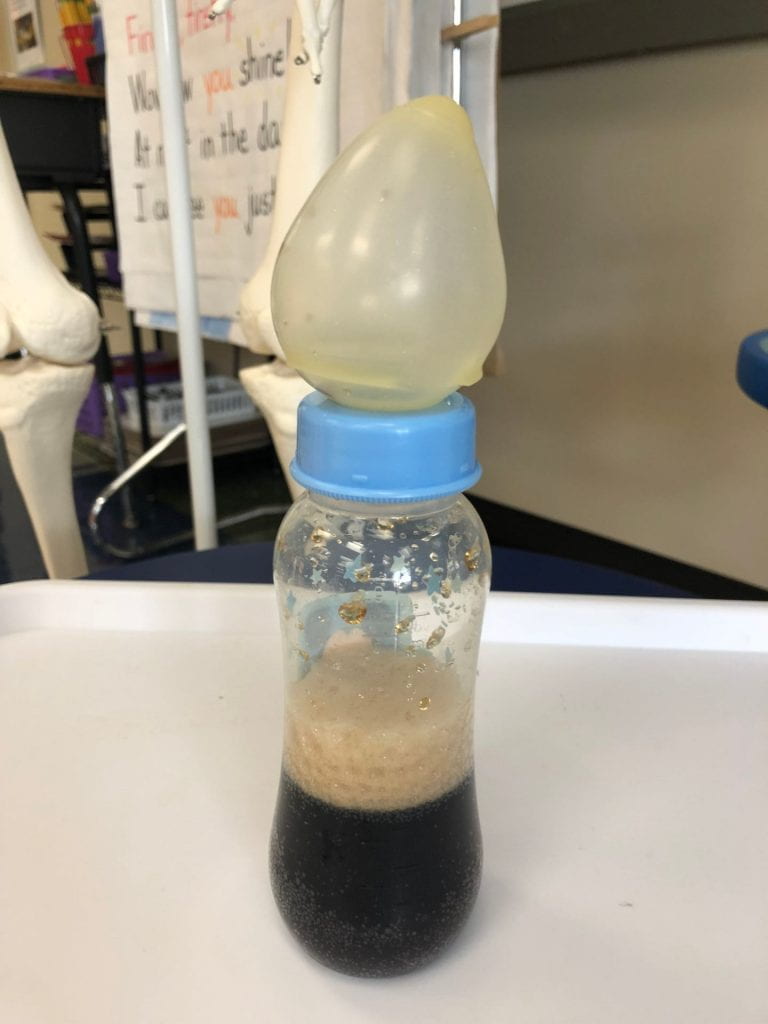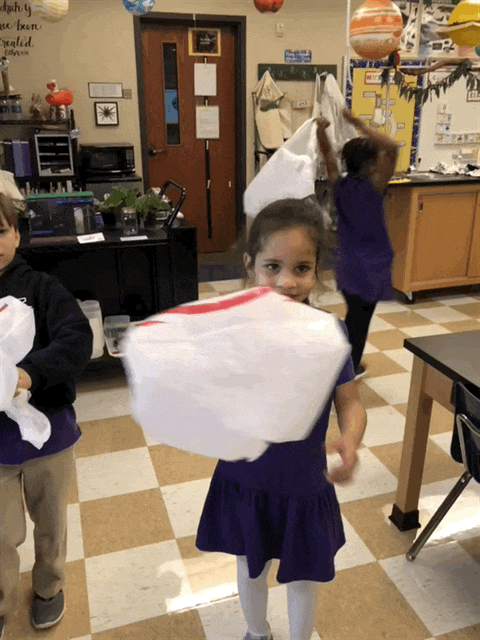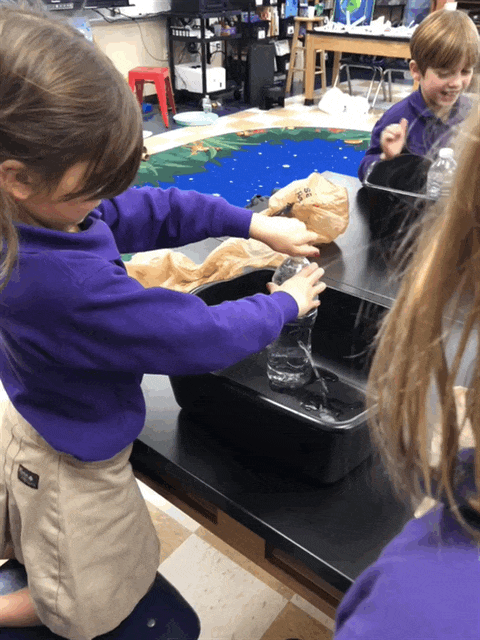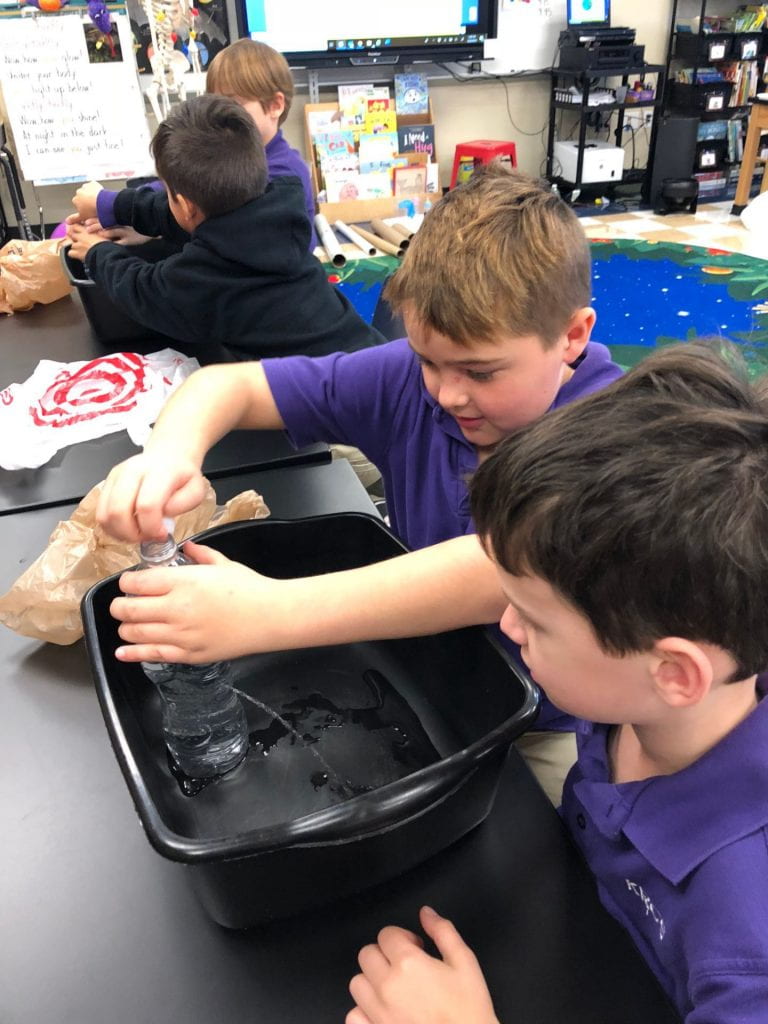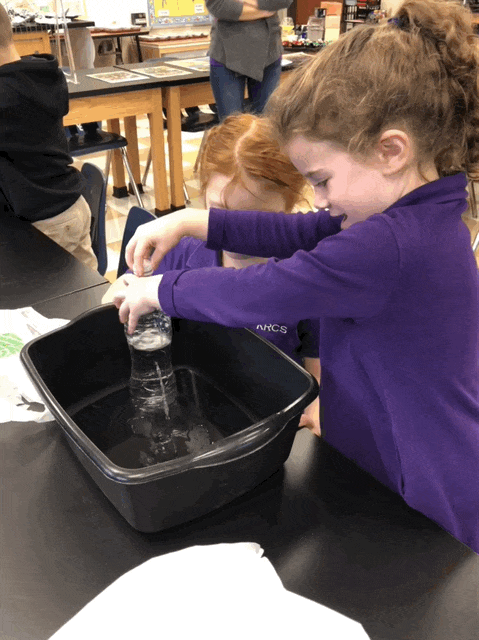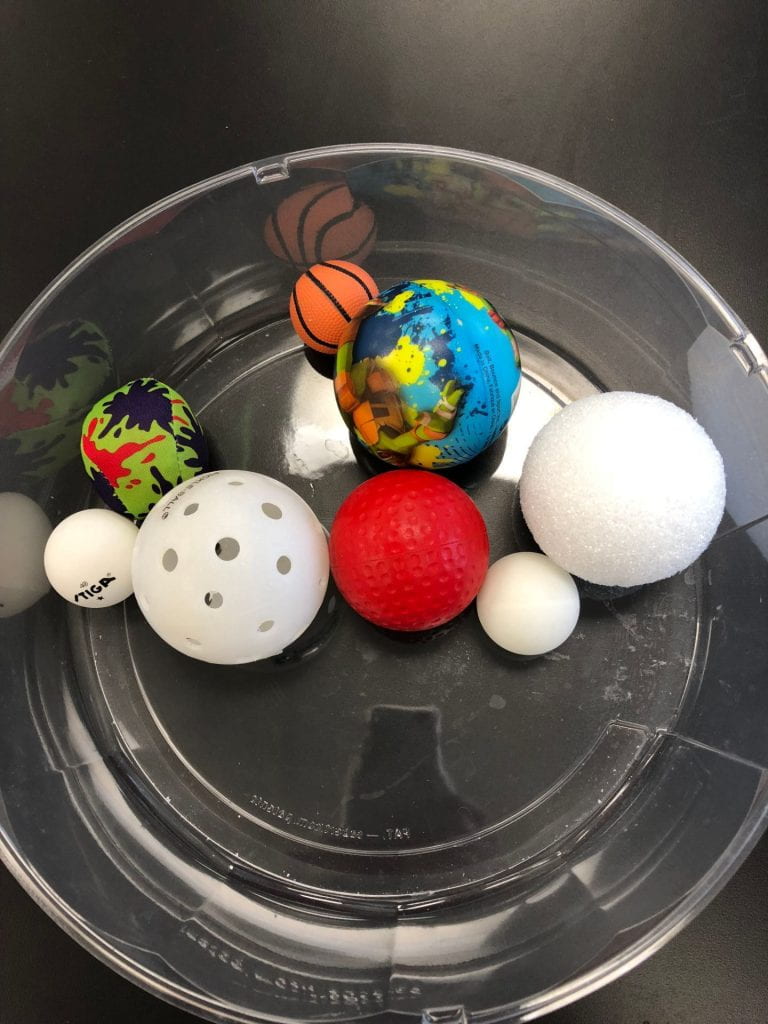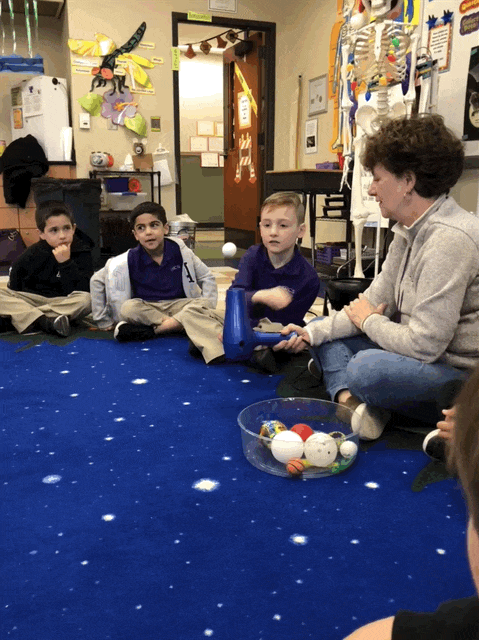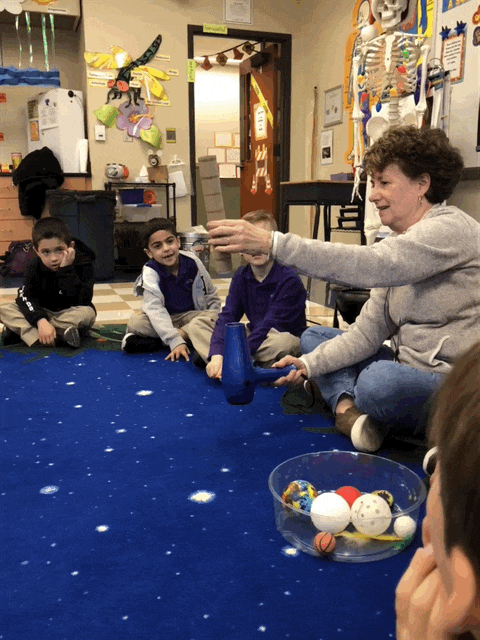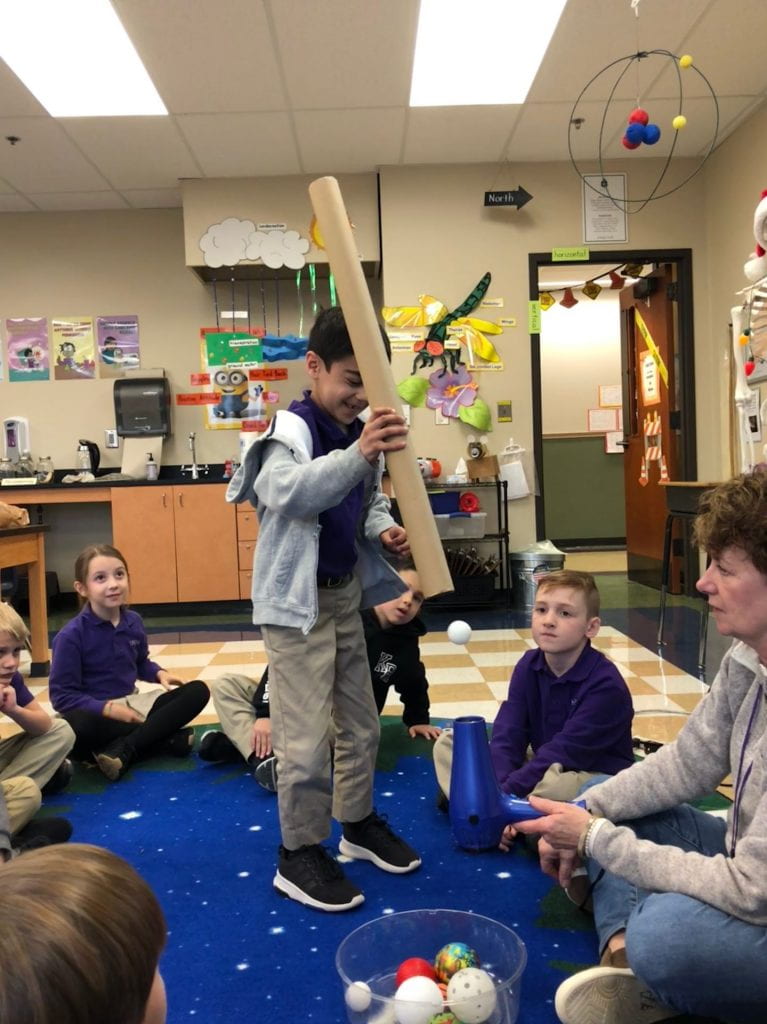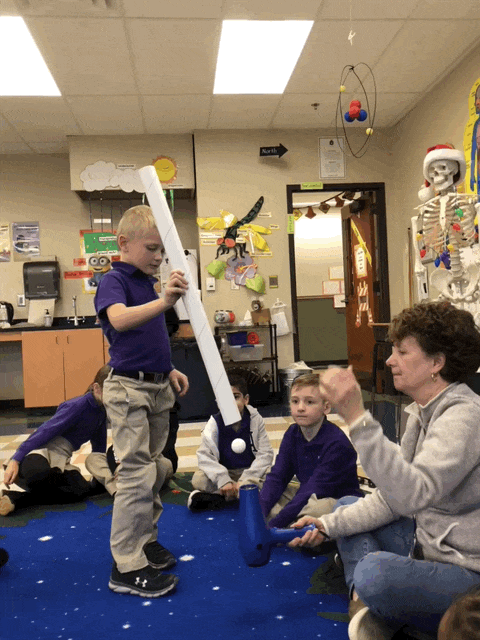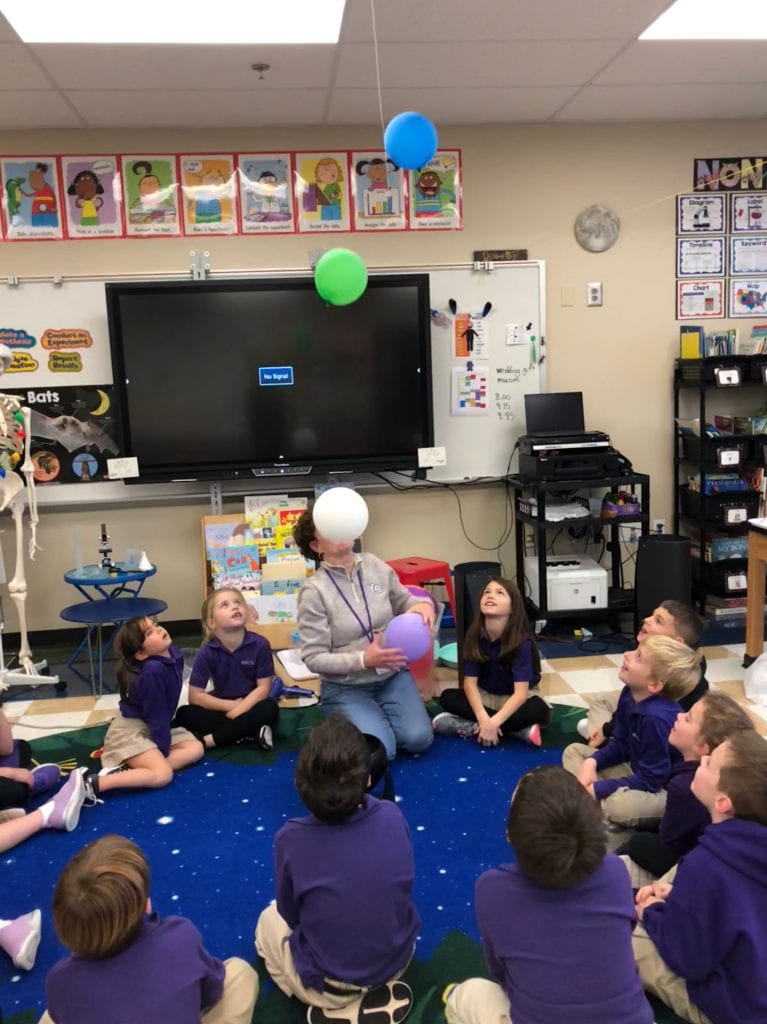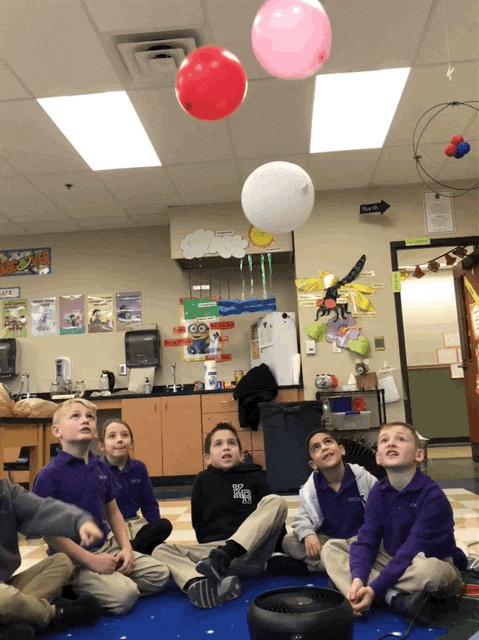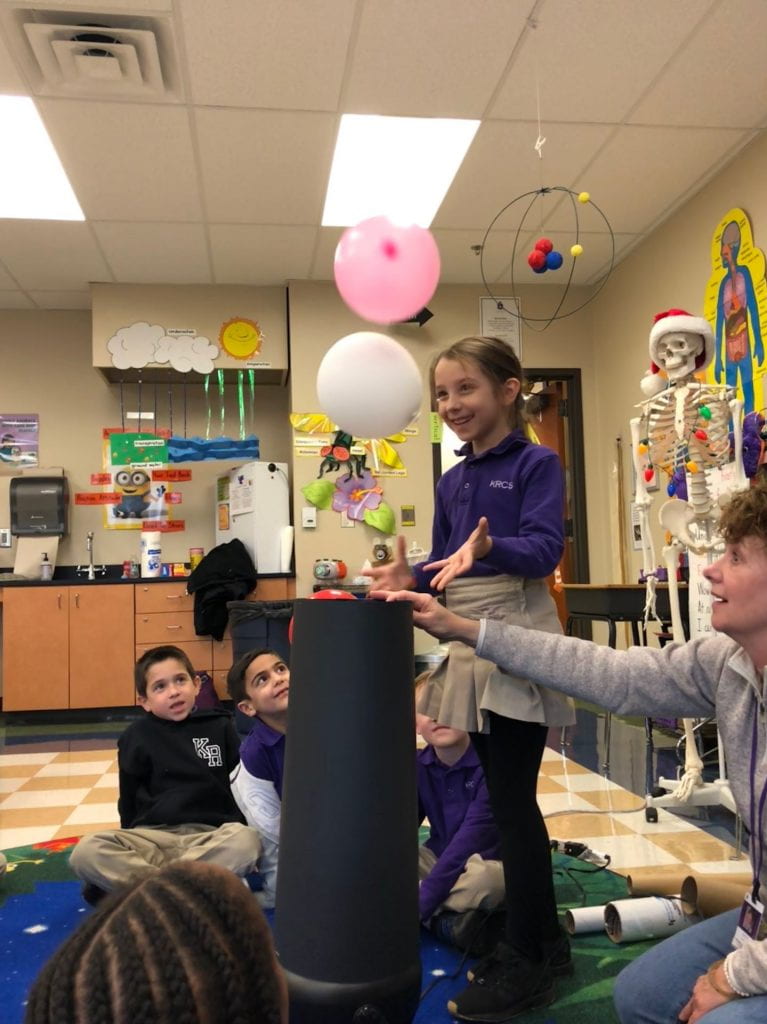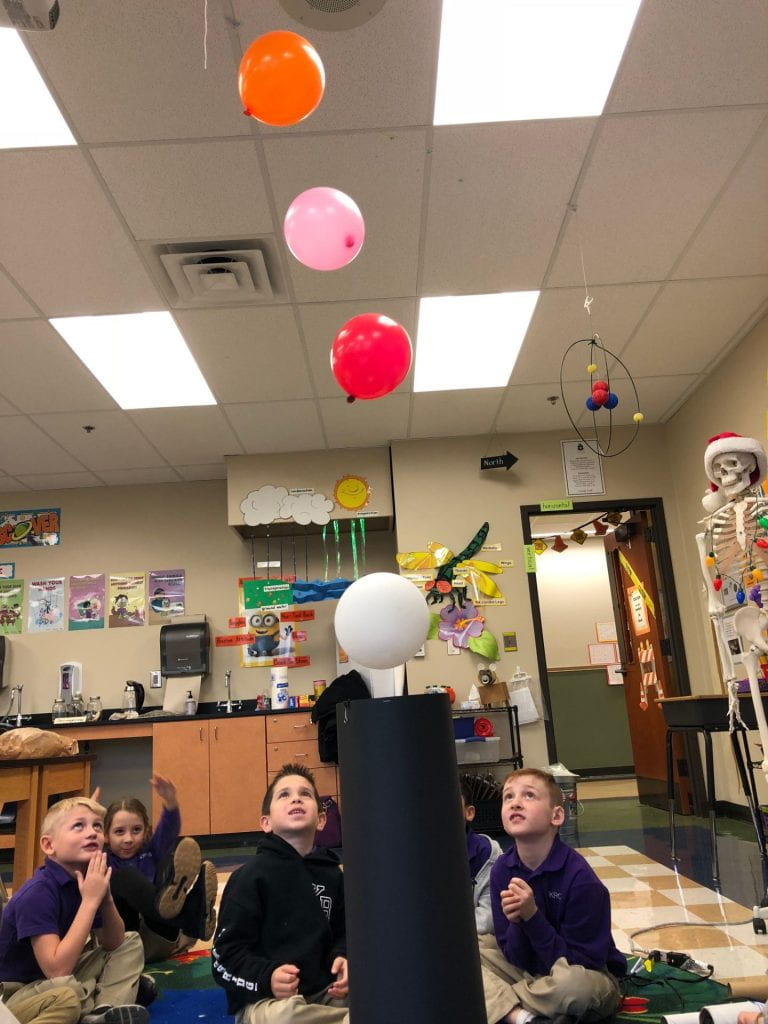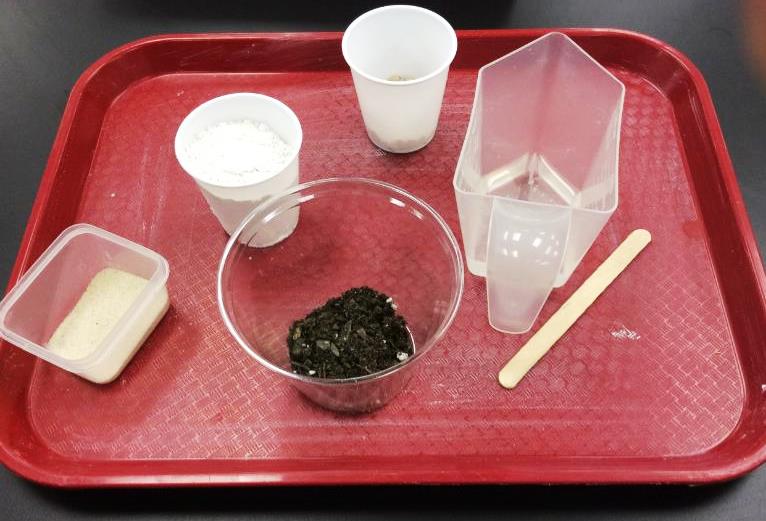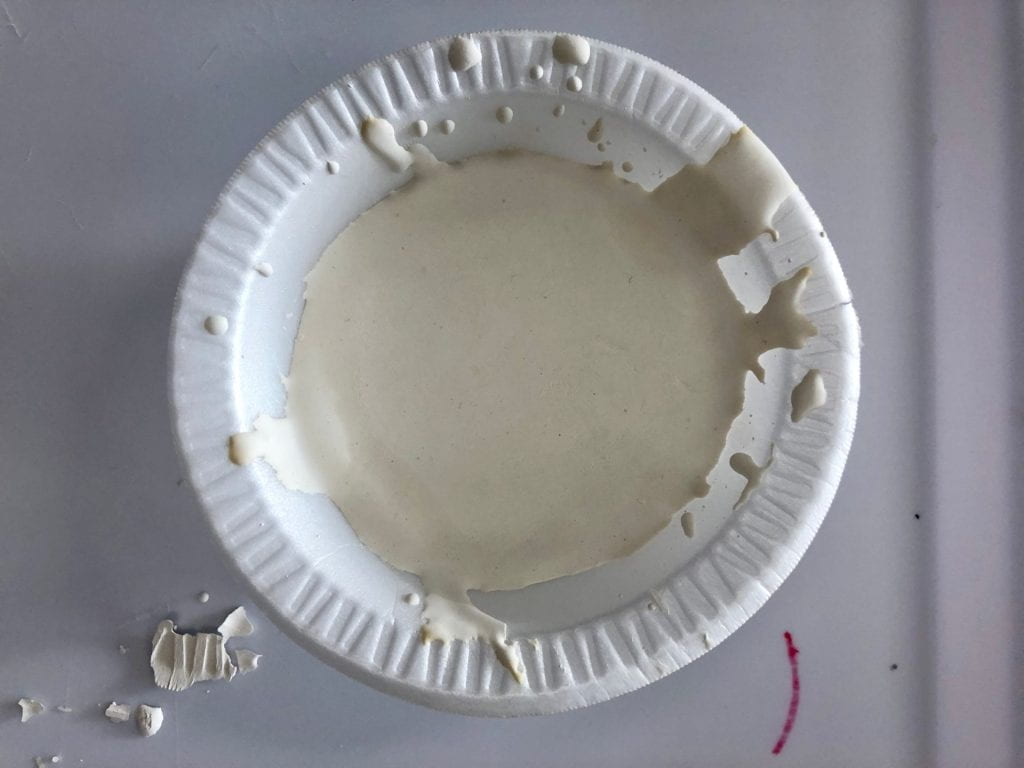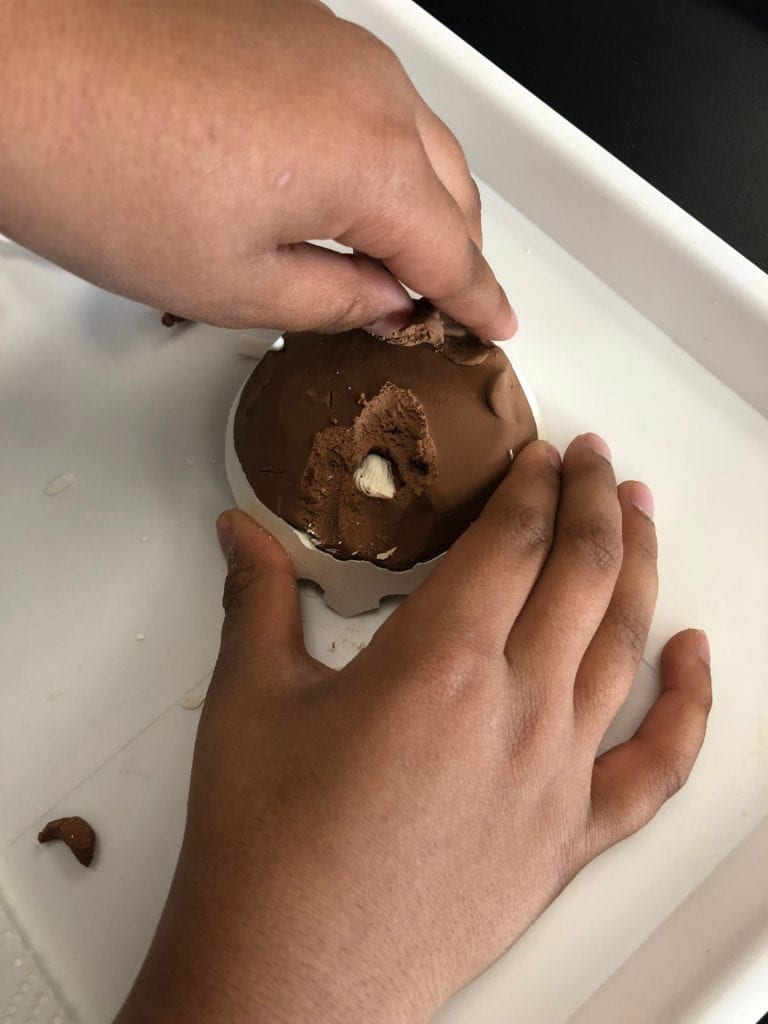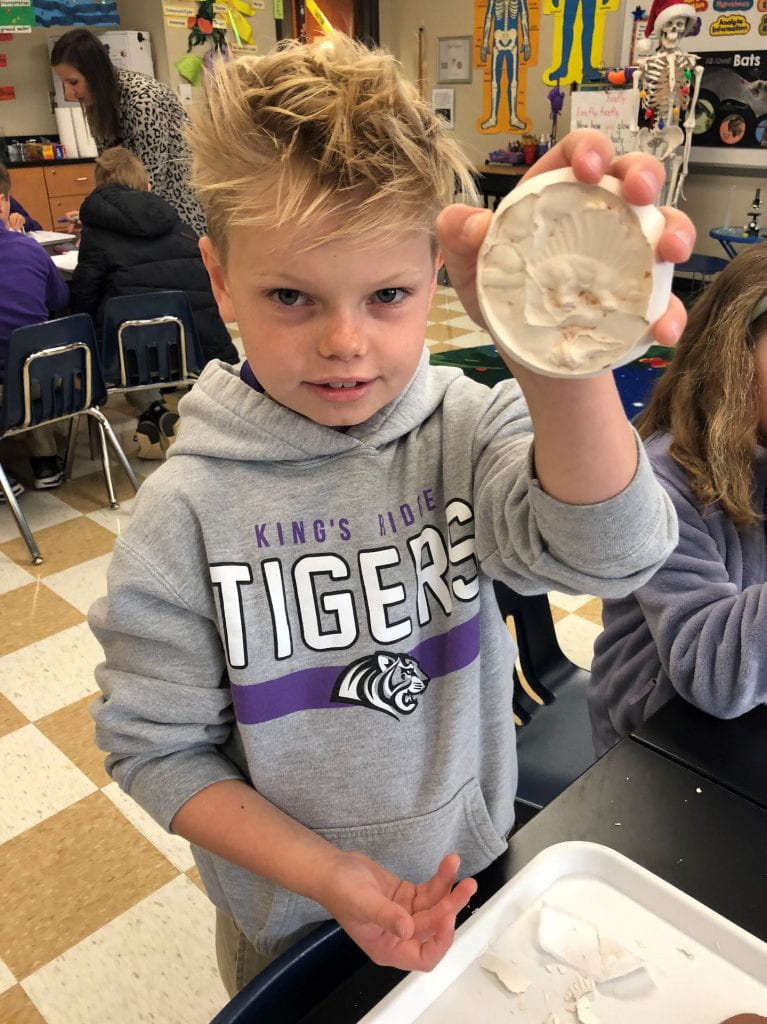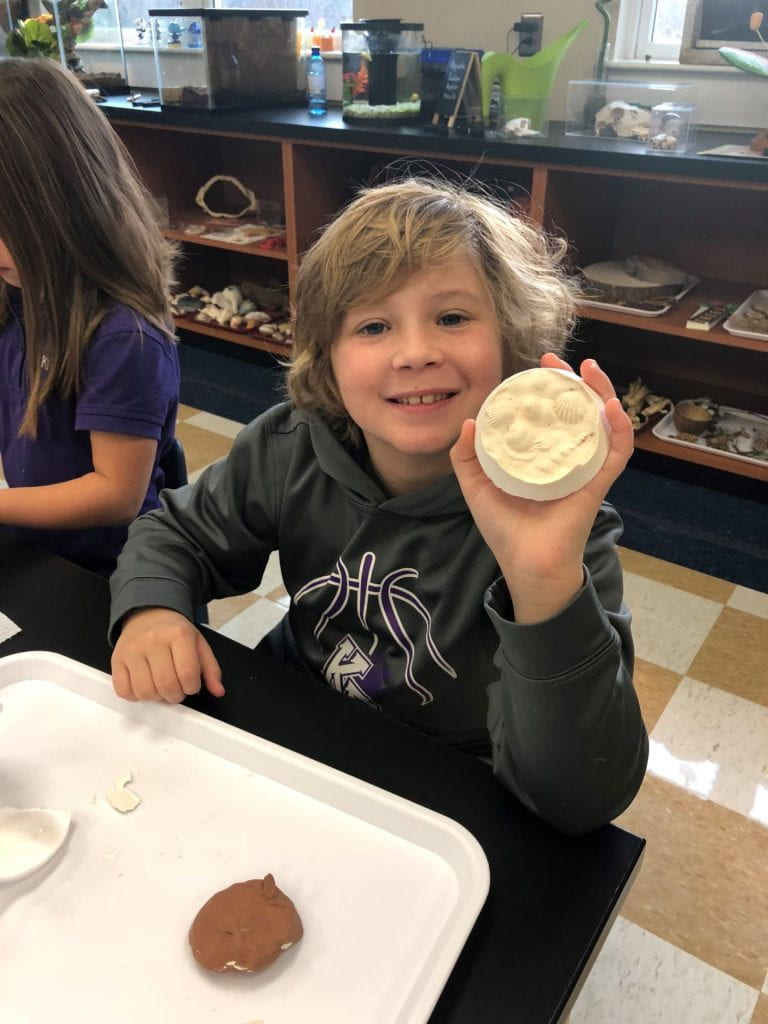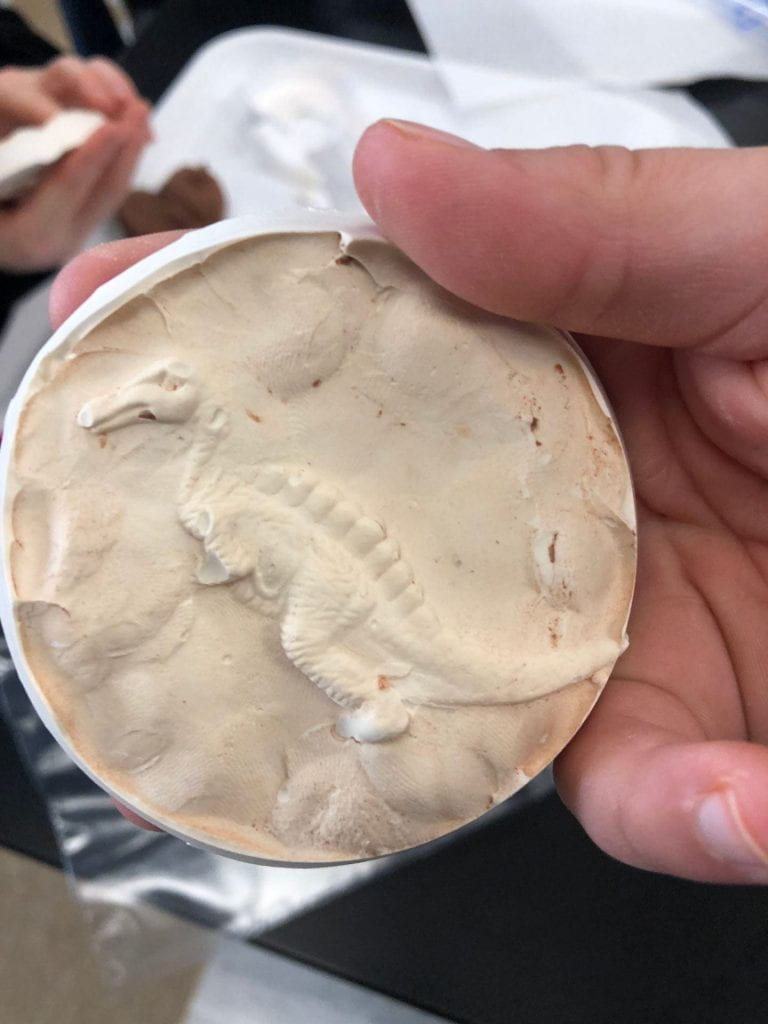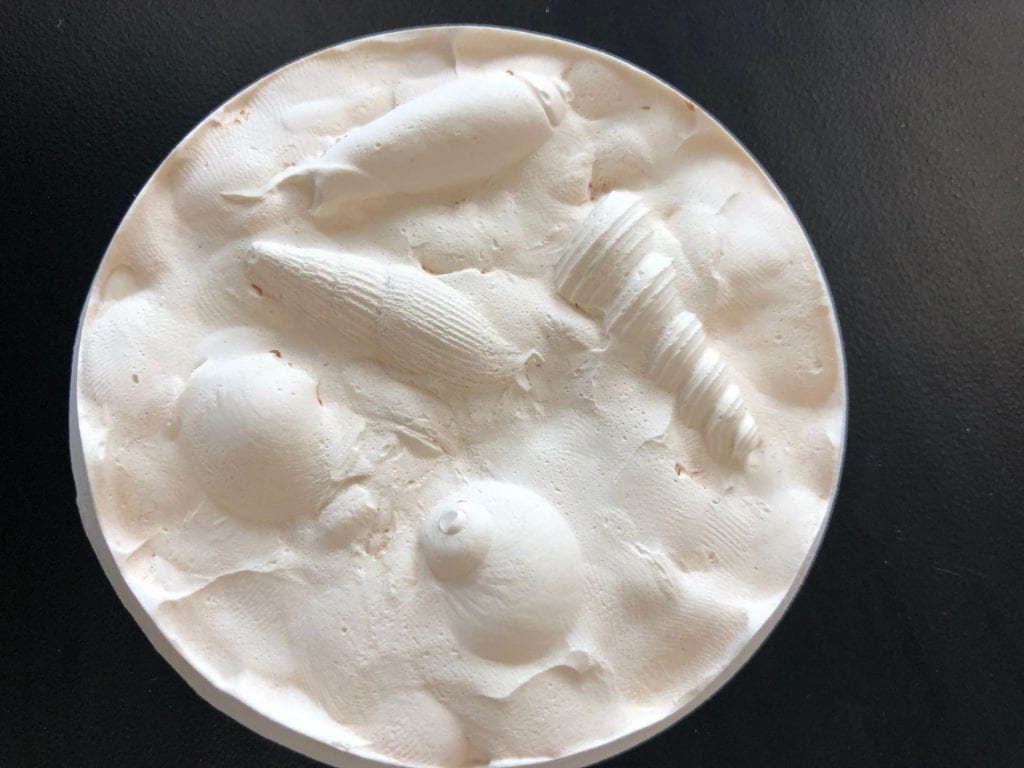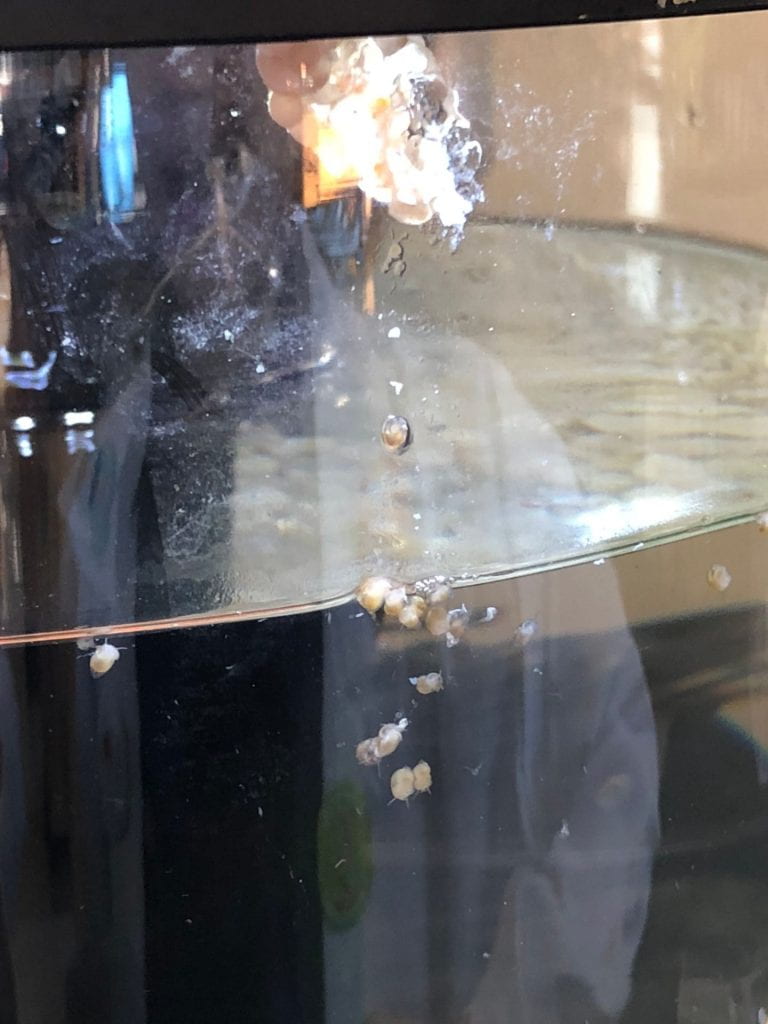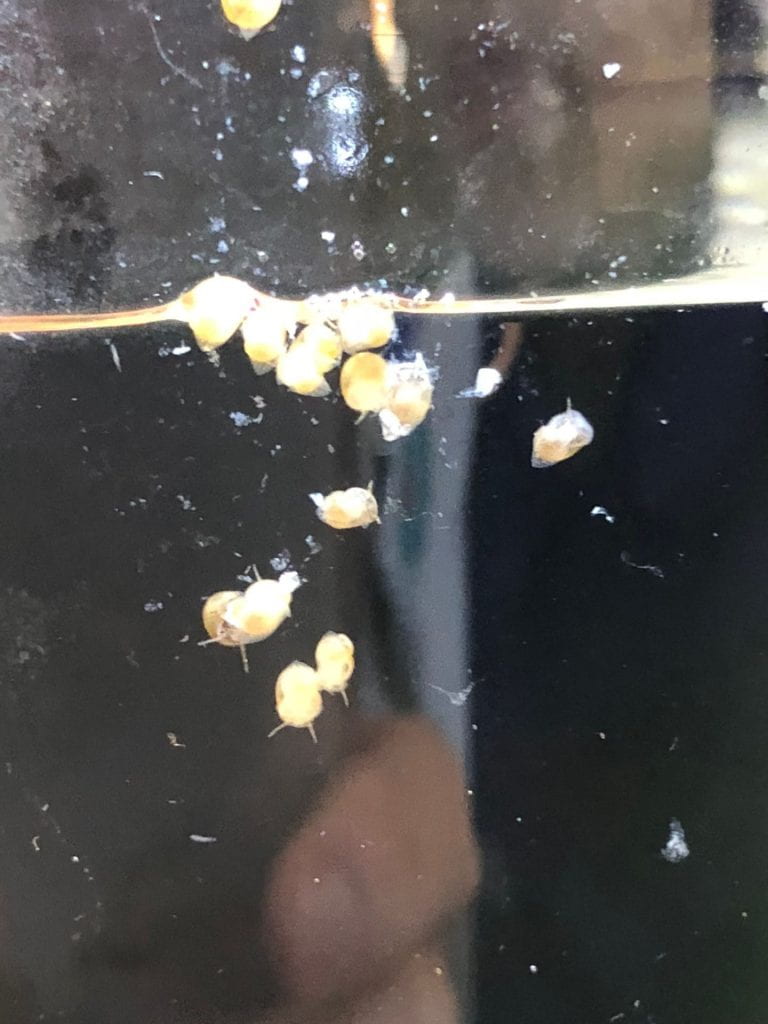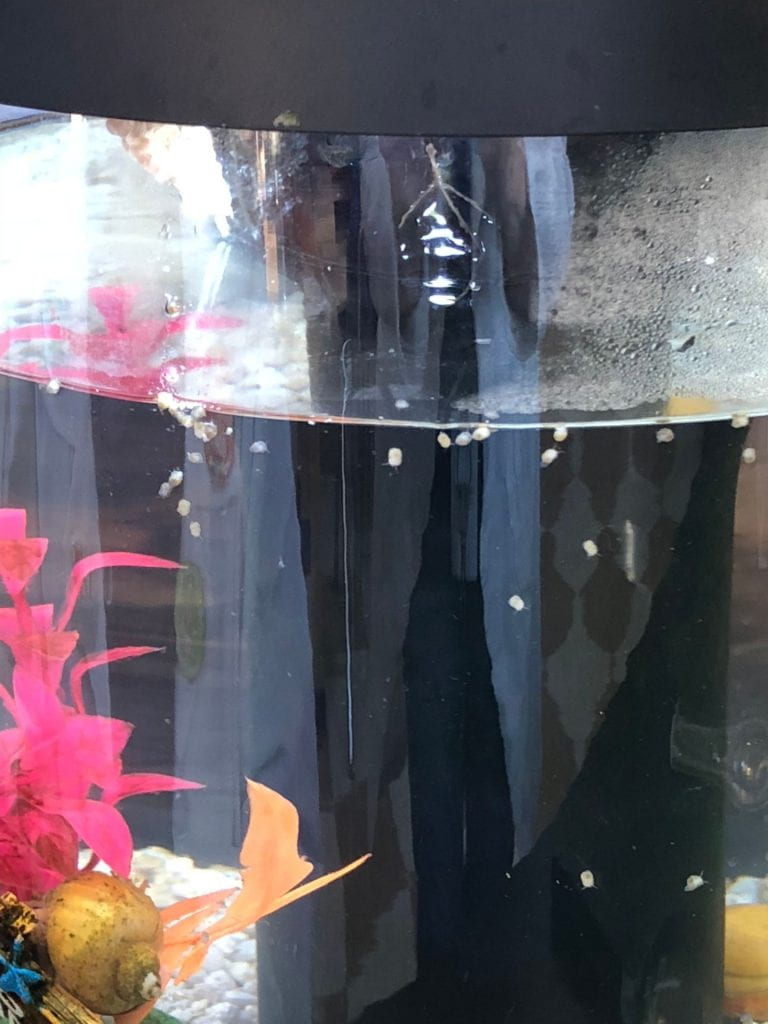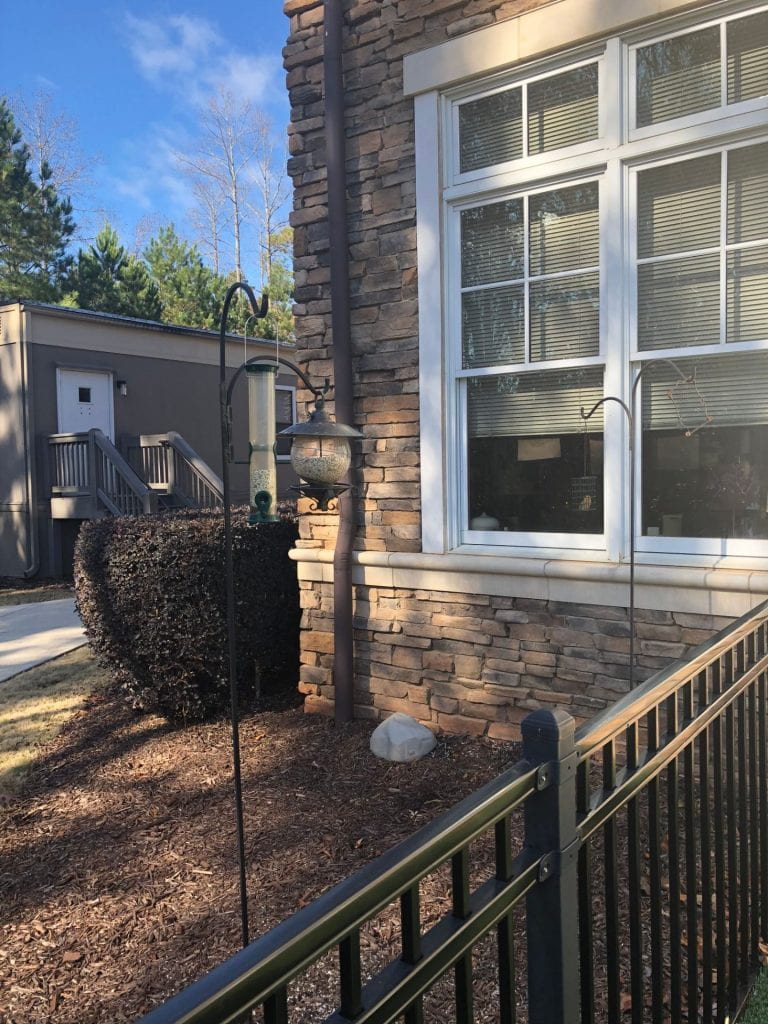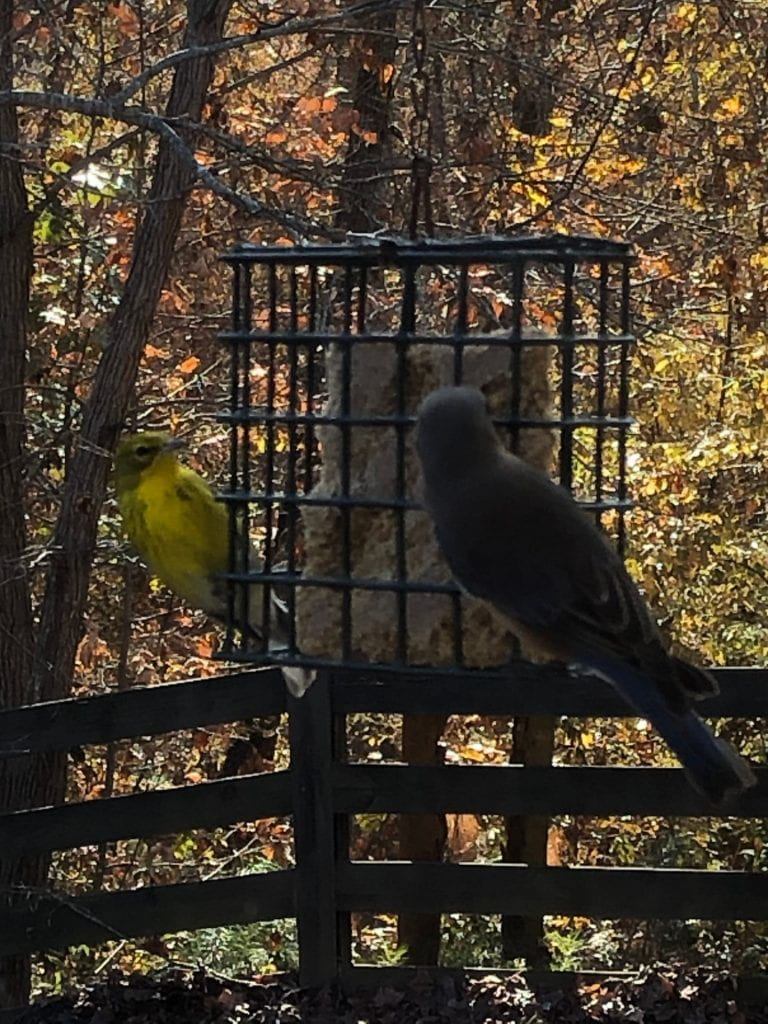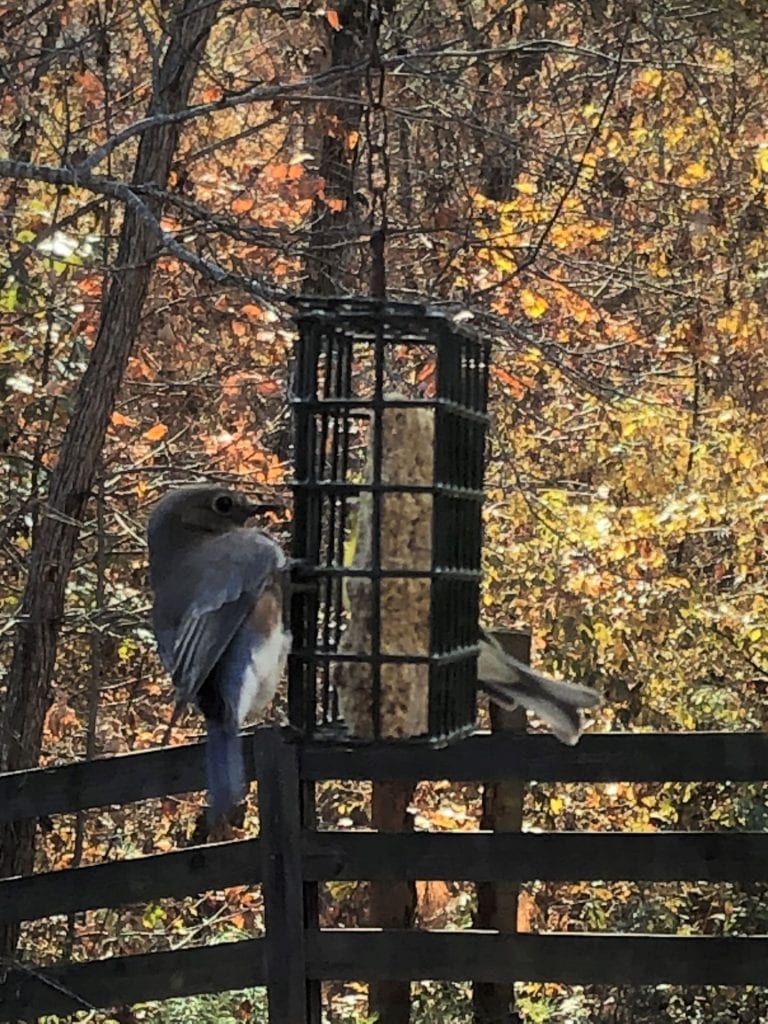Lava Lamps
First grade chemists began lab by observing a real lava lamp. We watched the hot wax rise and then fall after it reached the top and cooled. It reminded us of the way that yeast use budding to reproduce.
Then first grade chemists made lava lamps with a holiday twist! We used a solid and two liquids to create a gas.Why didn’t the water and oil mix? Why is the water at the bottom of our bottle? Why did the color fizzer color the water, but not the oil? What created the bubbles in our lava lamp? Why did they rise and then fall ? Click here for directions and for more information. Vocabulary included beaker and funnel.
We placed a flashlight under the bottle, and watched it glow!
Scientists in the Christmas Story
Magnet Introduction
PreK physicists began their study of magnets. There are many different types of magnets (horseshoe, bar, wand, and disc.)
These young scientists hypothesized which objects a magnet would and would not attract, and then we sorted those objects. When we finished, we drew our conclusions. Magnets attracted objects made from metal, but not all metal objects. The coin and can are made from metal, but they weren’t attracted to the magnets.
Next, each student walked around the room with a magnet testing to see which items in the lab were magnetic.
Finally, we investigated how magnets can push and pull. Click here to learn more about magnets.
Jabba and Yoda
Matter – Gases
First grade scientists continued their study of matter with a lab that focused on gas and air. We know a gas is in a liquid when we see bubbles. I opened carbonated beverages, and poured them into baby bottles. The nipples did not have holes inside them, so look what happened when I shook the bottles! What gas filled the nipples?
How can we prove that there is air all around us? Can we catch some of the air and fill up a plastic bag?
We also demonstrated that there is air around us with these water-filled bottles. I punched a hole in the side of each bottle before filling them. When the scientists opened the bottle top, air pushed the water out of the hole. When they closed the bottle top, the water stopped flowing.
First grade physicists also explored Bernoulli’s Principle. Look what happens when you place a ping pong ball in the flow of air created by a hair dryer! When we placed a paper cylinder above the ball, the ball went flying through. Why? Will other balls float too? If not, why? Will the ball move through a wider cylinder? Click here to learn more.
We repeated the investigation with balloons over a fan. We added a tube of poster board to funnel the air. Would a beach ball float too?
Sedimentary Rocks and Fossils
Sedimentary rocks are created from particles of sediment that accumulate in layers over a long period of time and harden into rock. They are often found near water and may contain fossils. I made a sedimentary rock by acting out a story about rain picking up sediments, soil, pebbles, shells, sand, and a small turtle as the water traveled across land. We pretended thousands of years passed and the sediments hardened into a rock. These resemble the conglomerate rocks we have in our rock boxes.
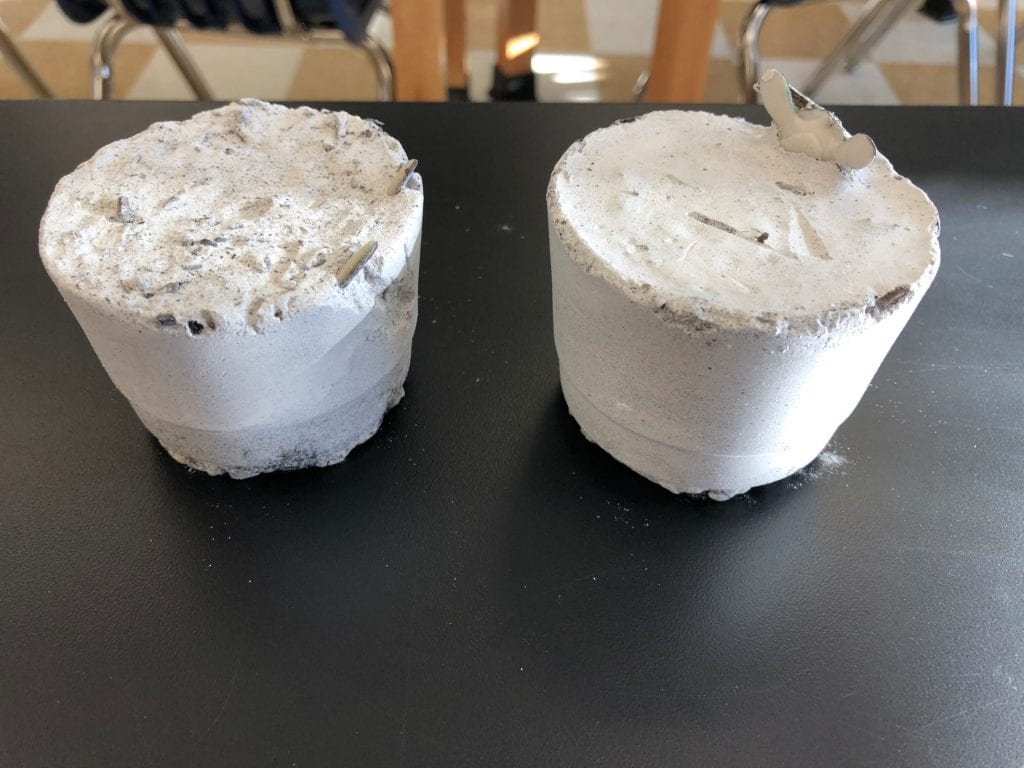
I found the following sedimentary rocks with these fossils when I was a child.
Before the holiday break, third grade scientists pressed shells or dinosaurs into clay at the bottom of a pond (bowl). Then we poured sediments on top of the impression and allowed it to harden. Today, we were paleontologists and excavated our fossils.
